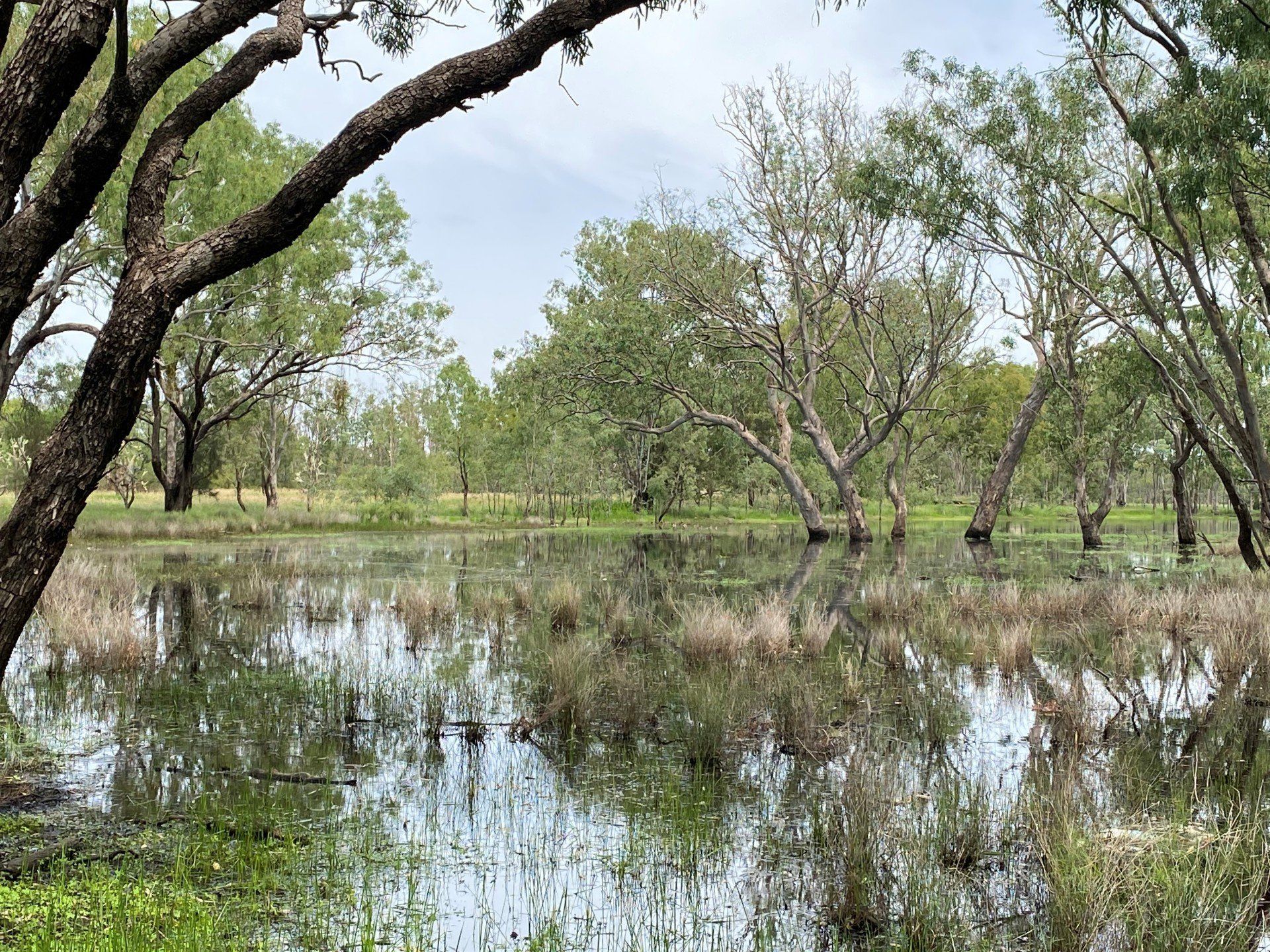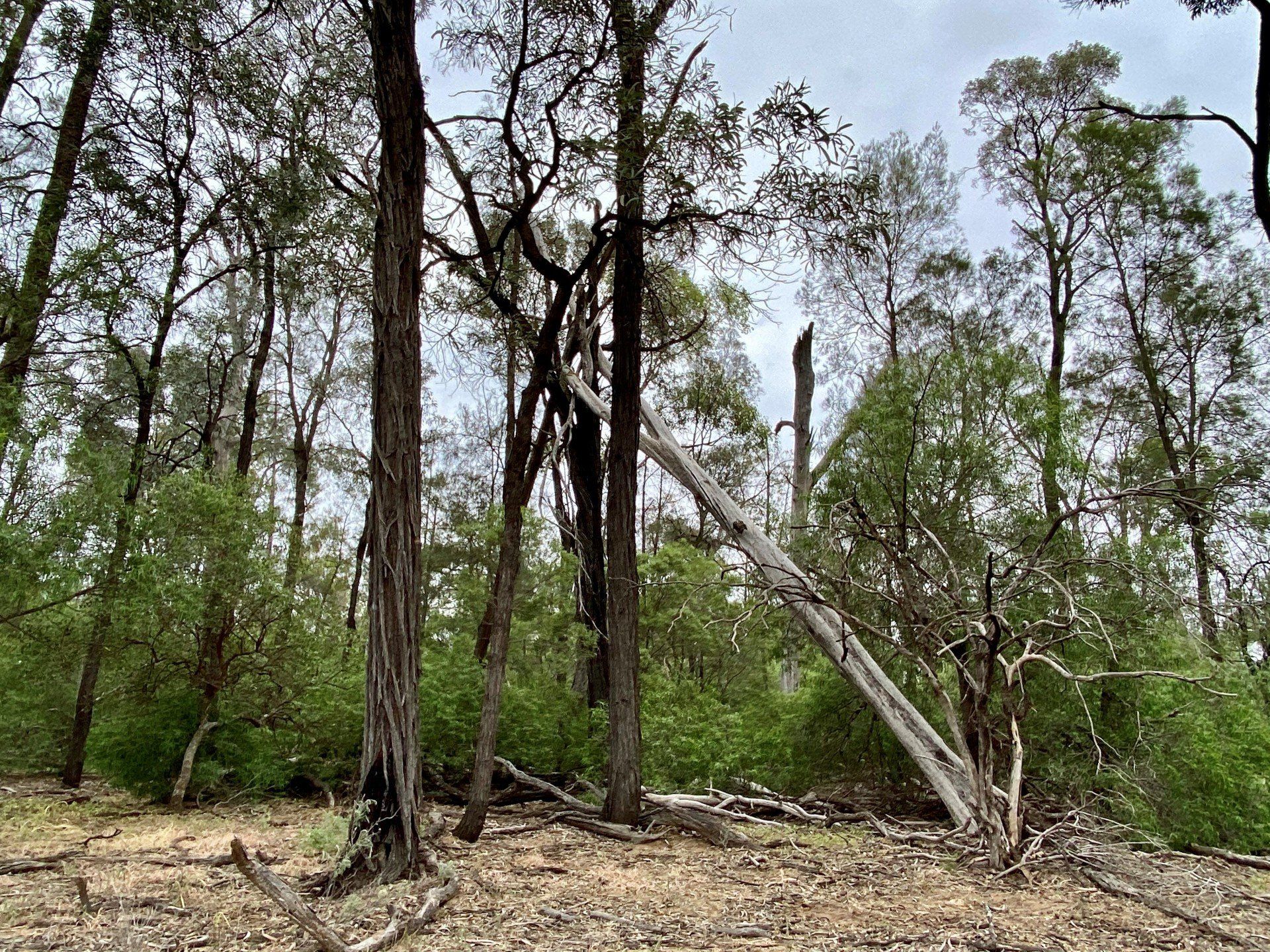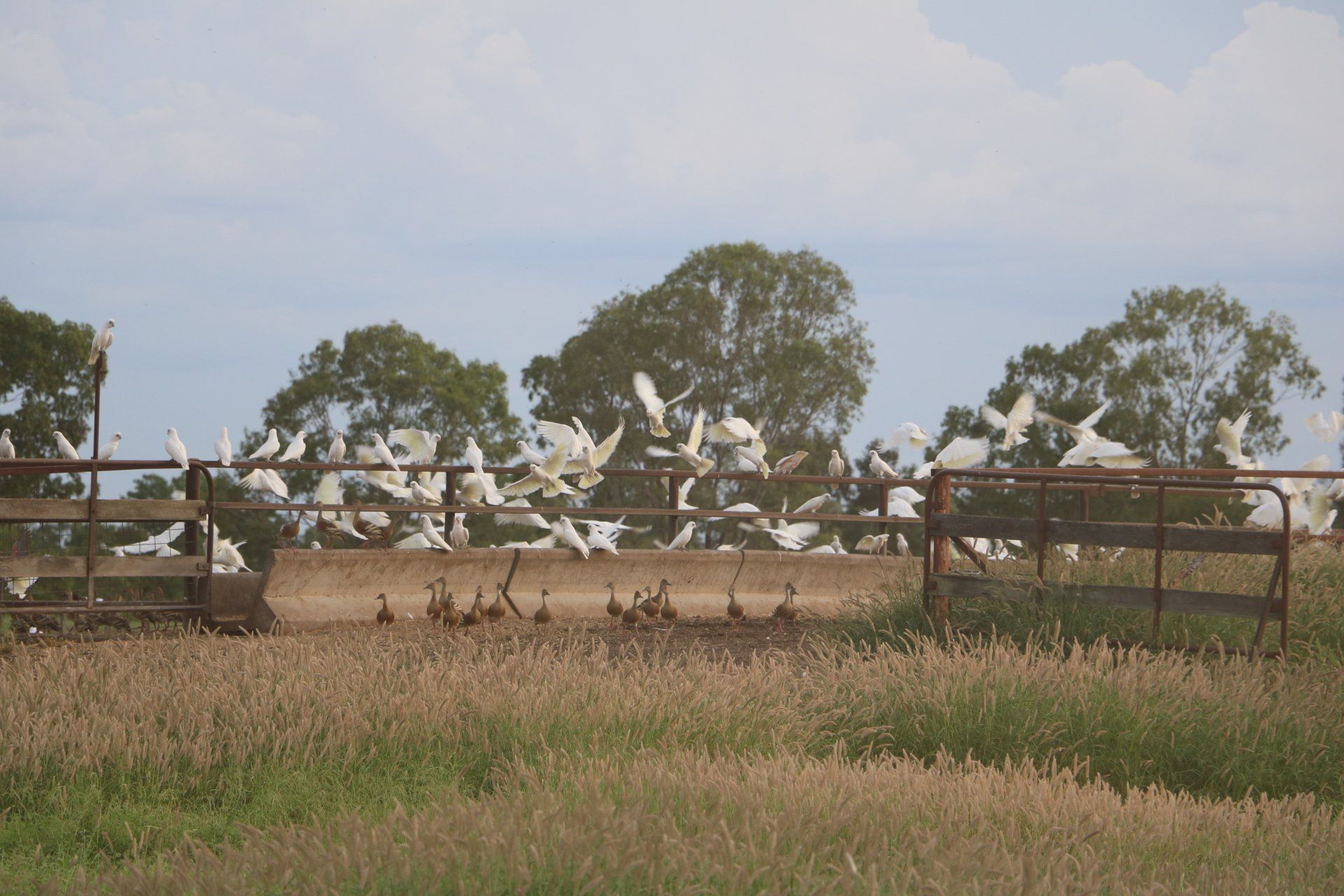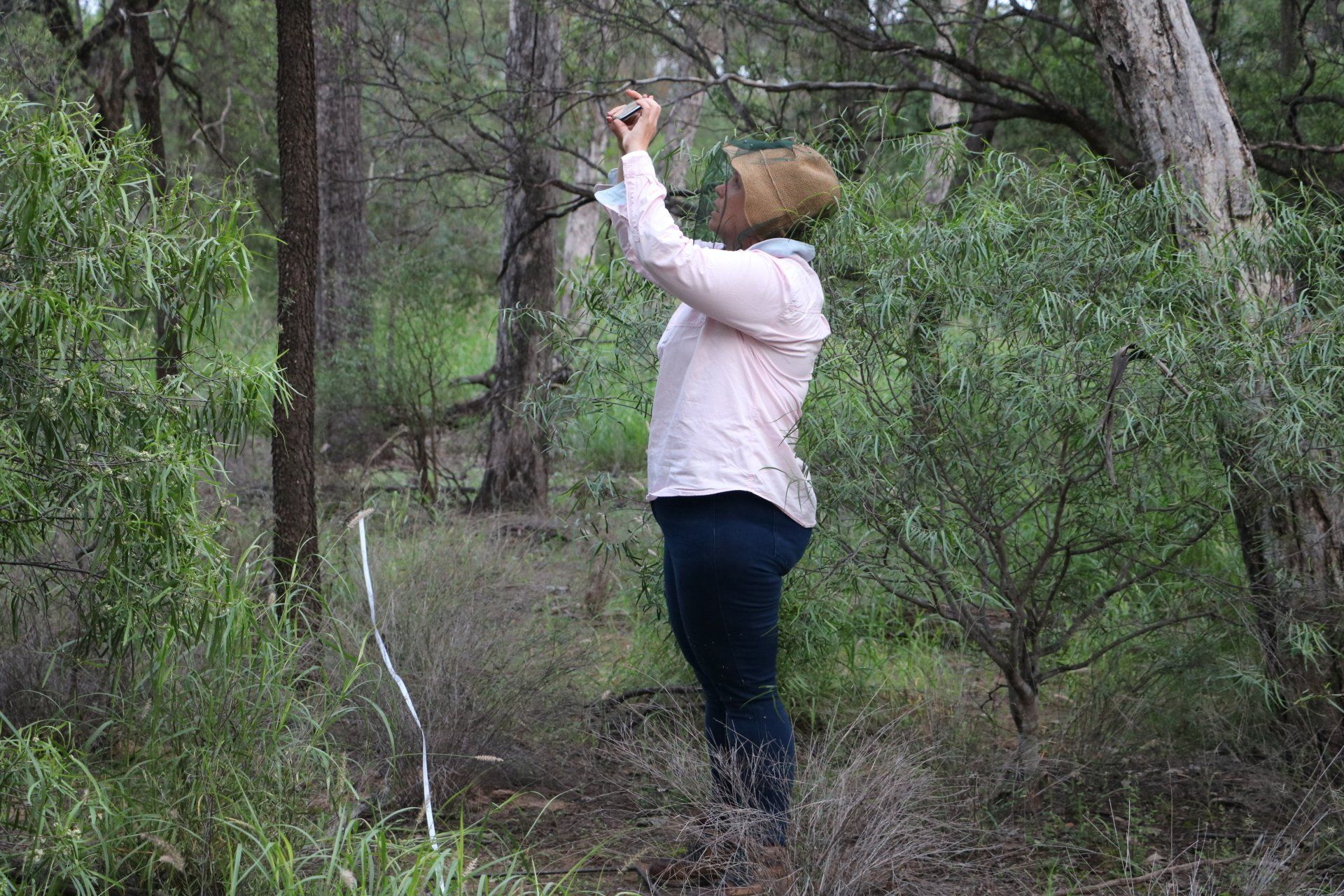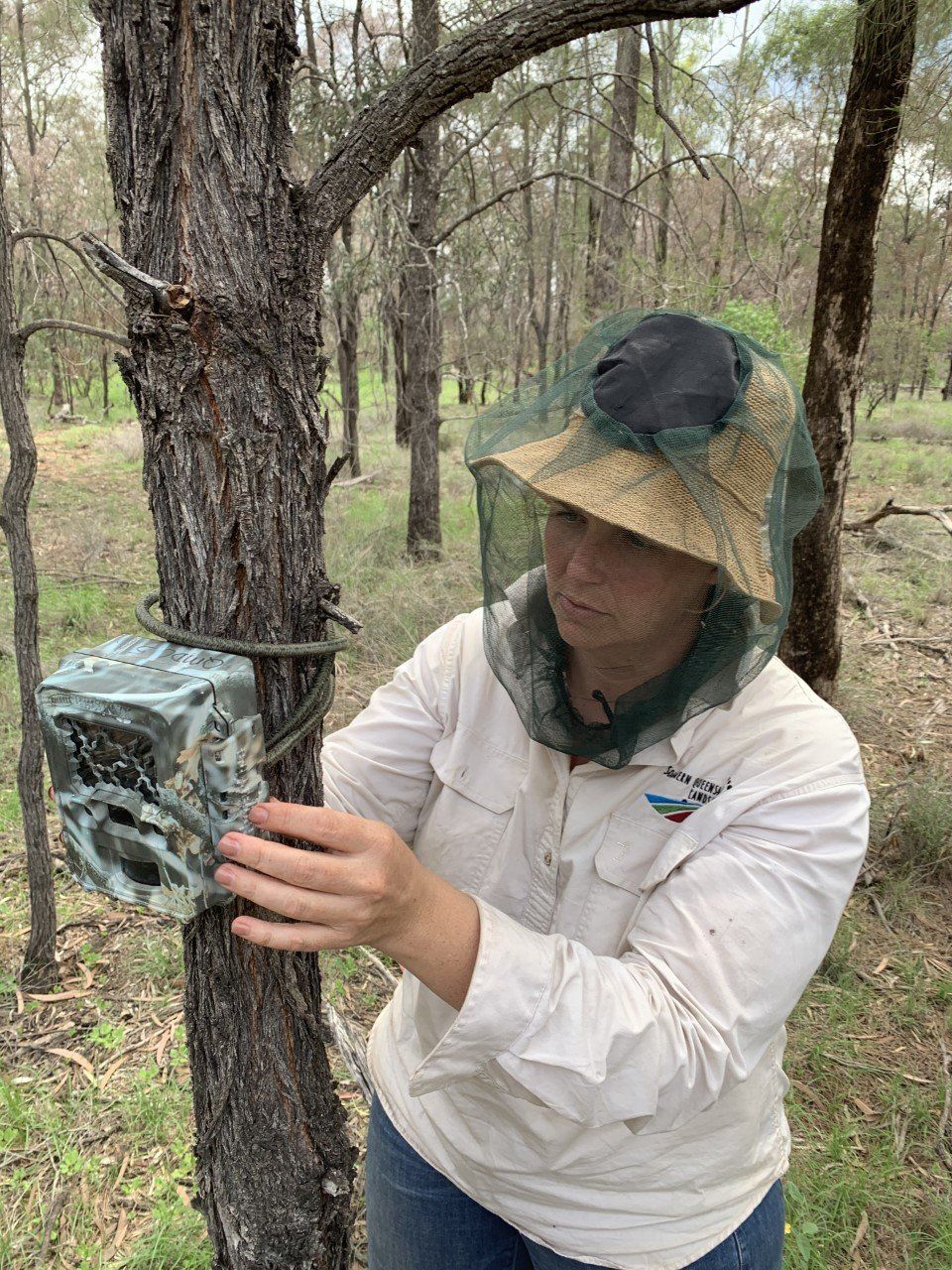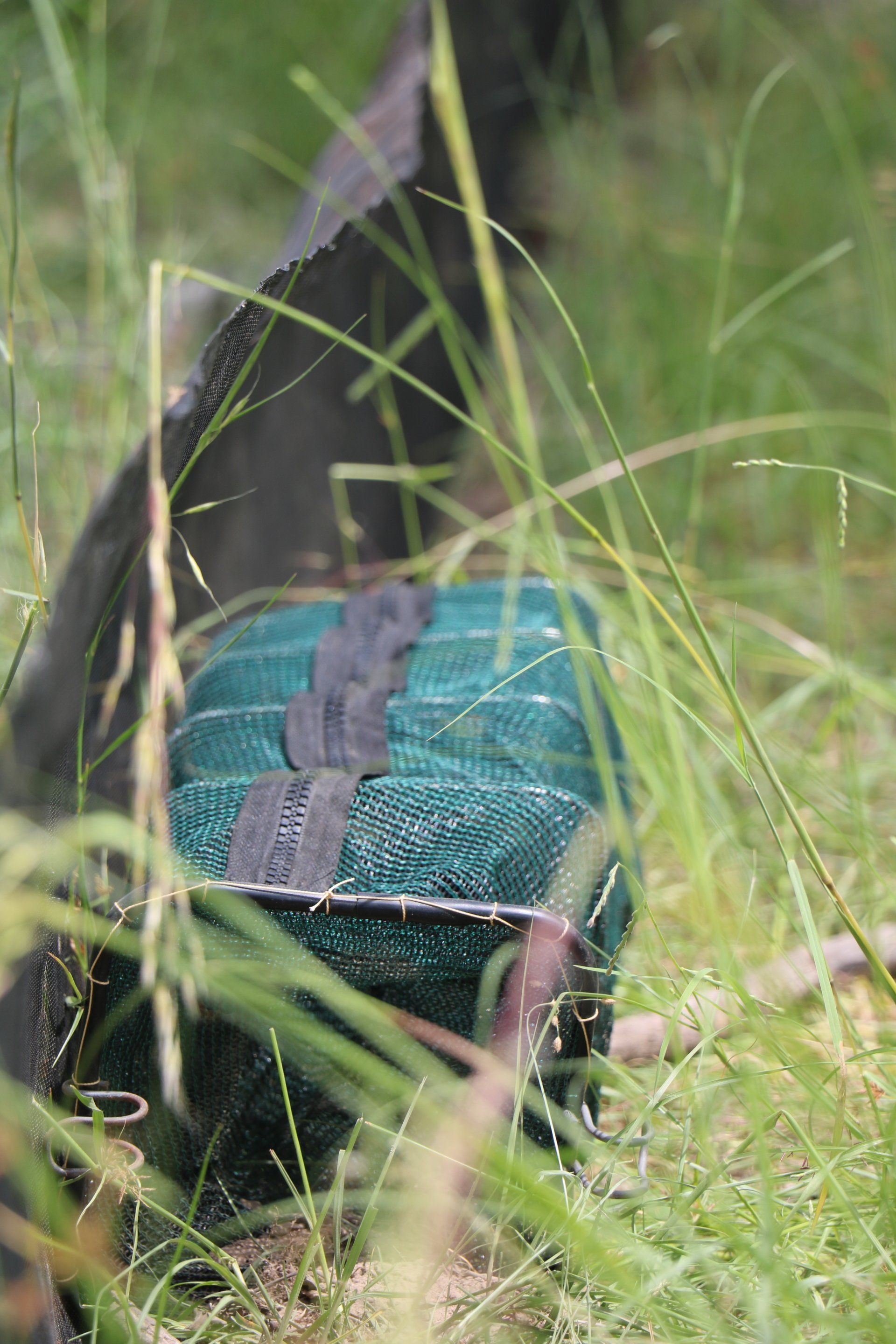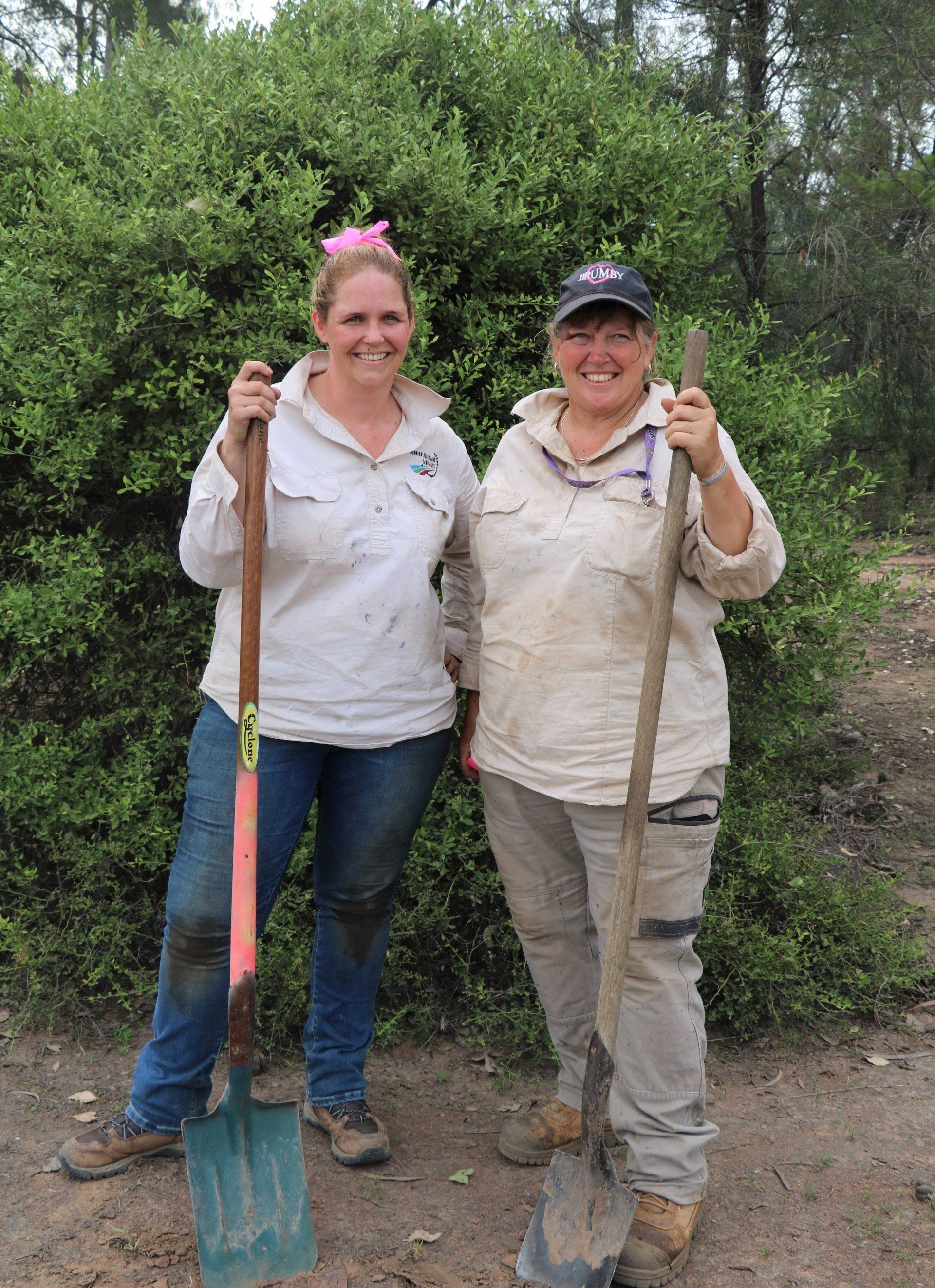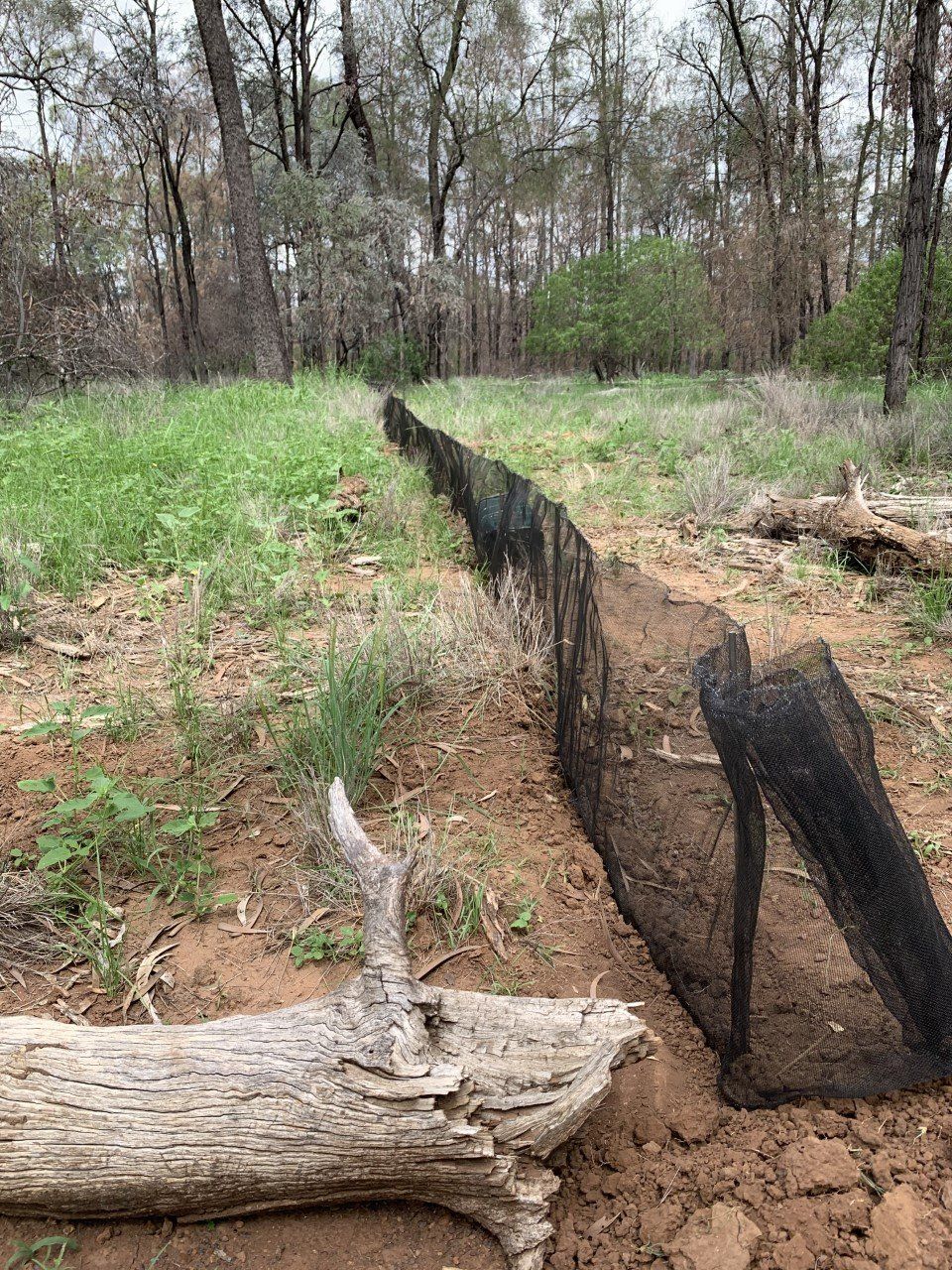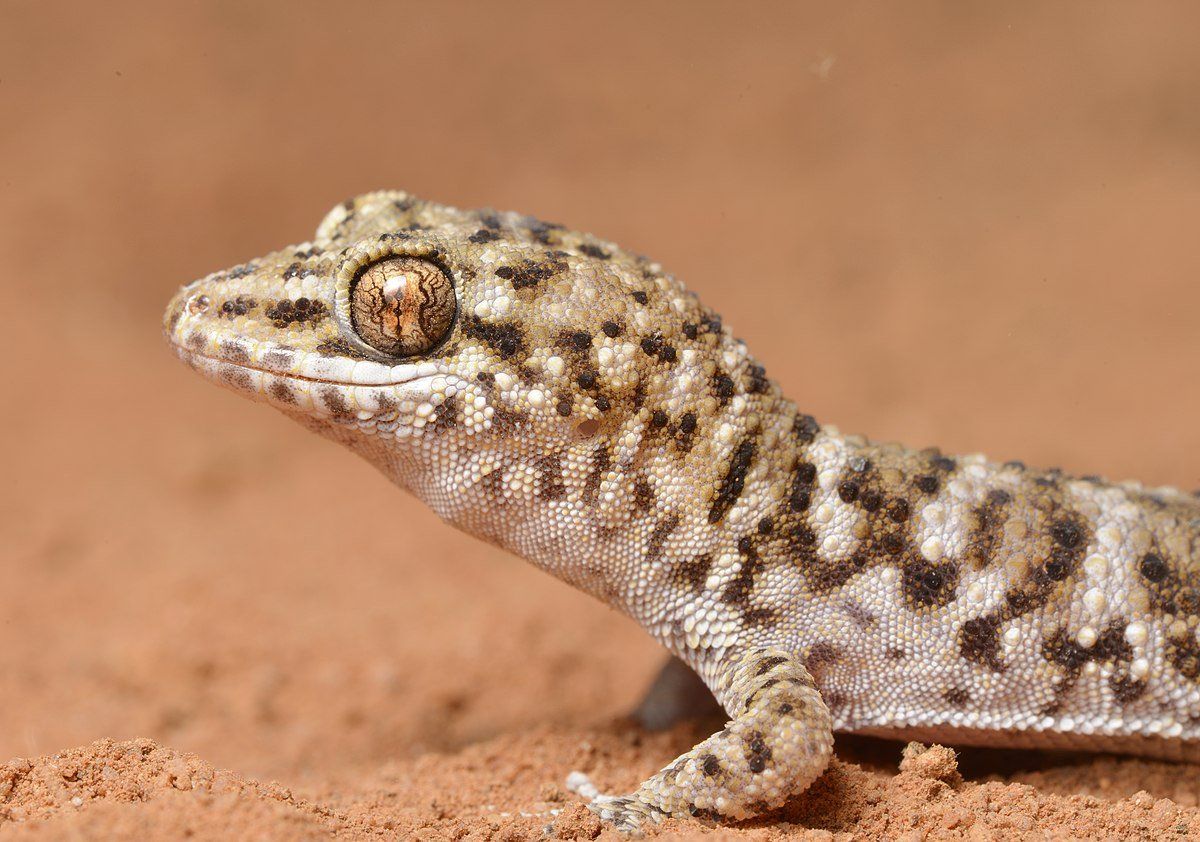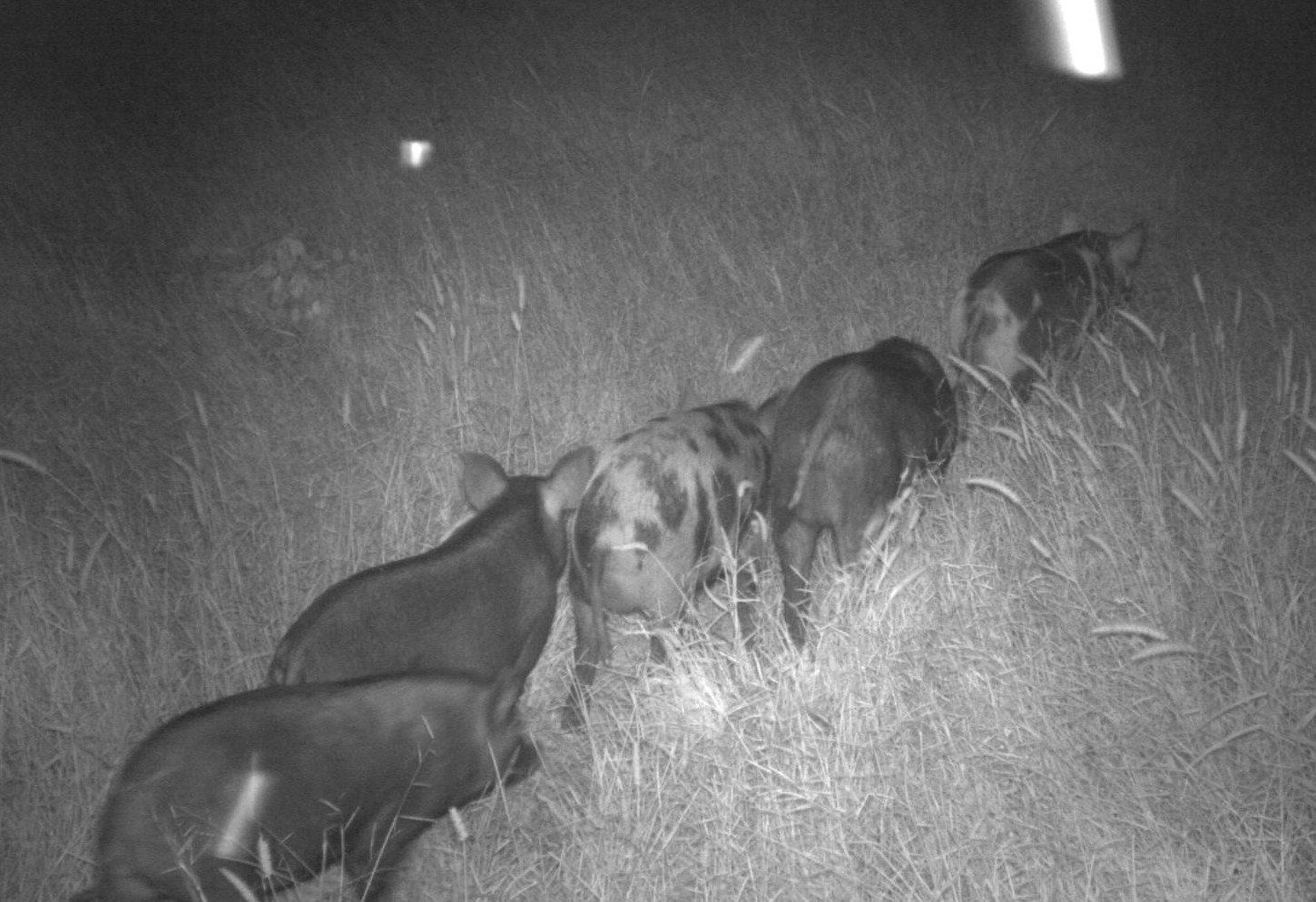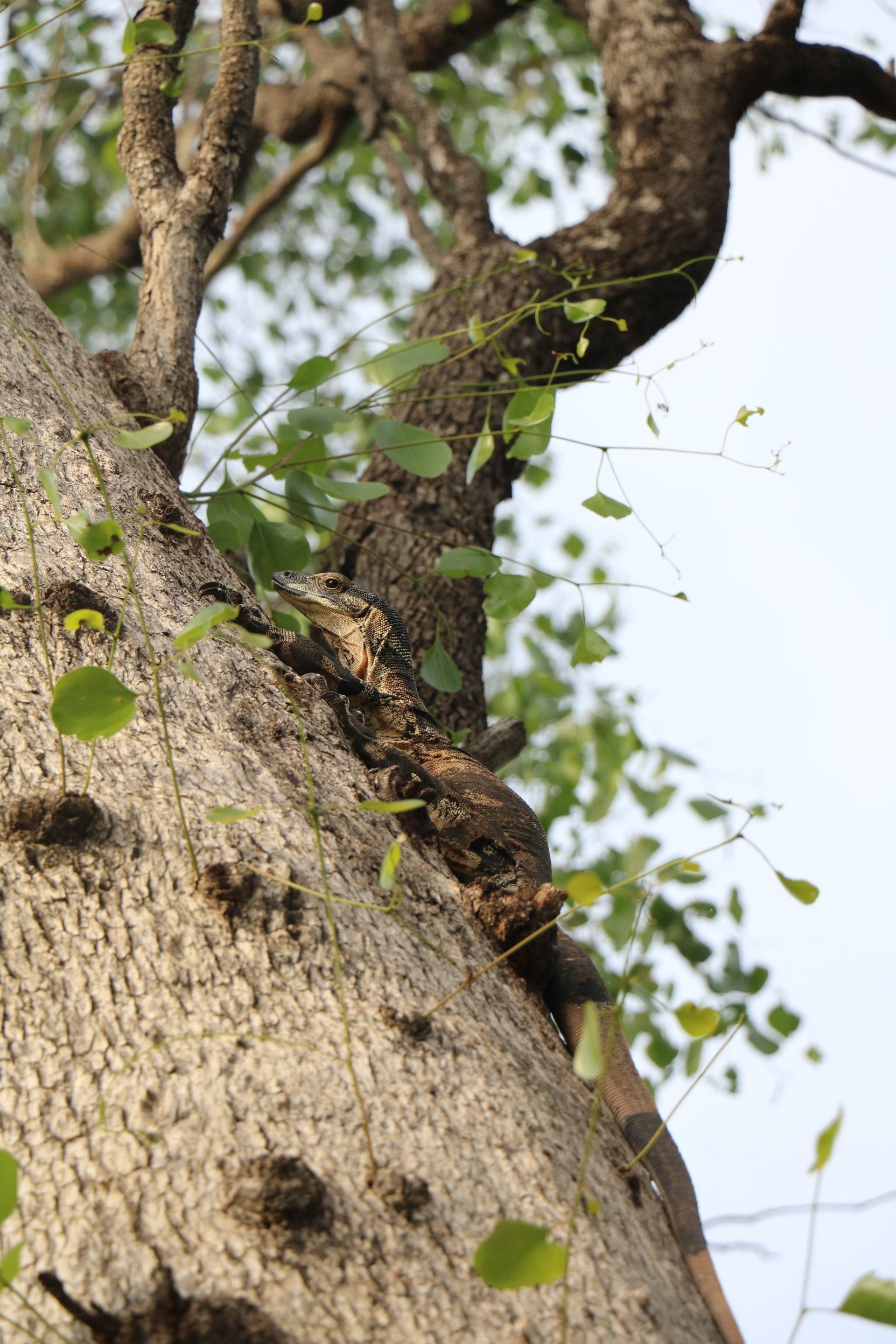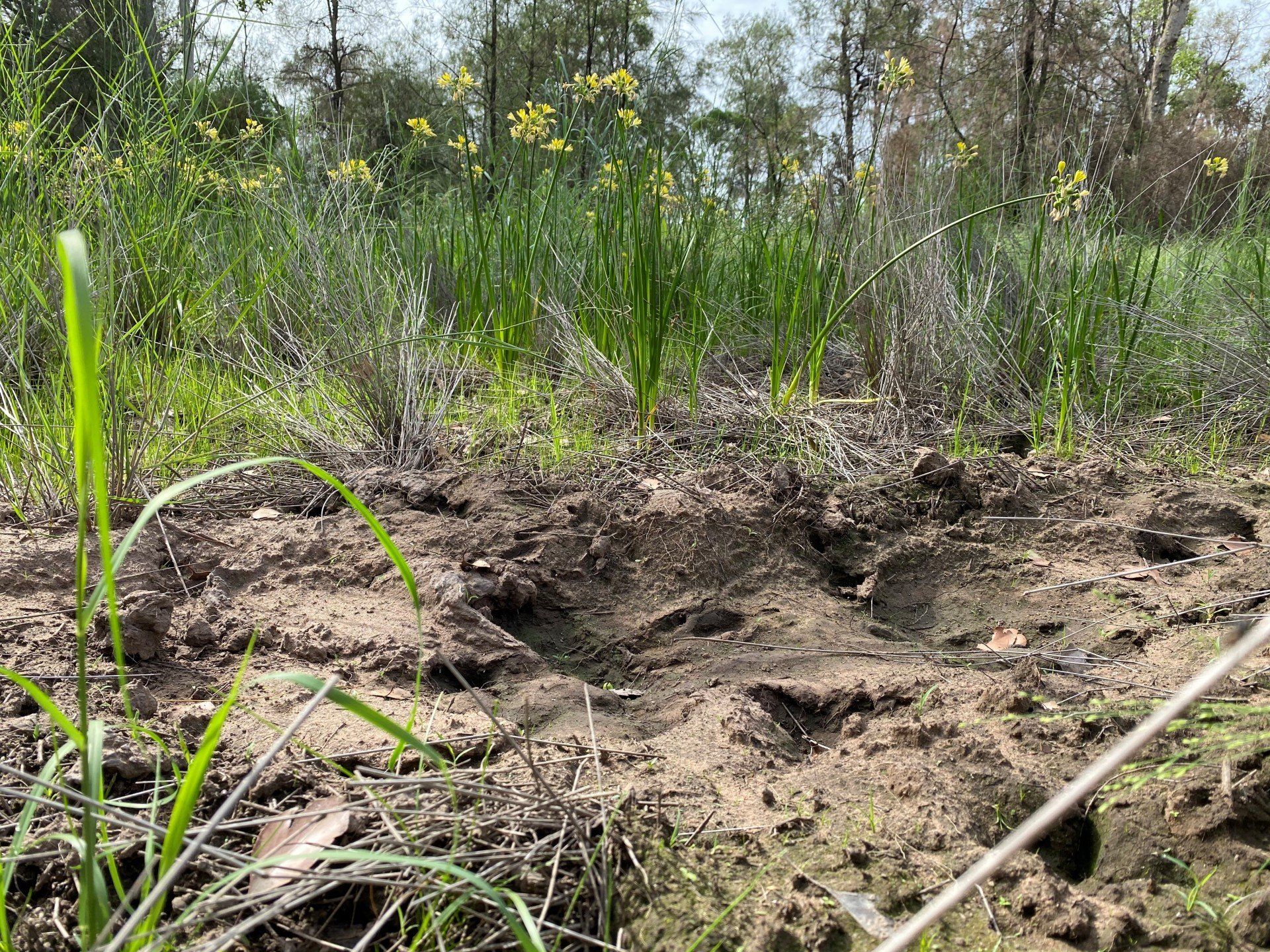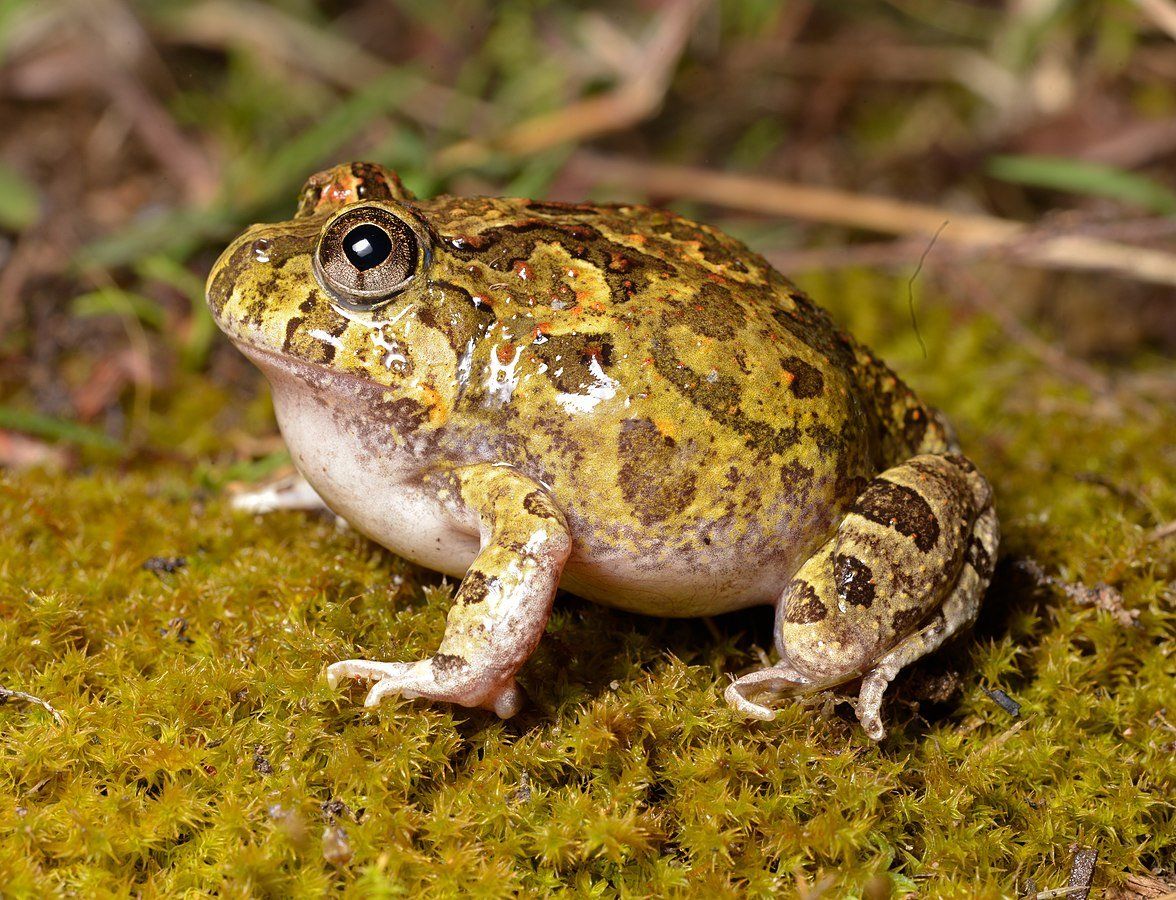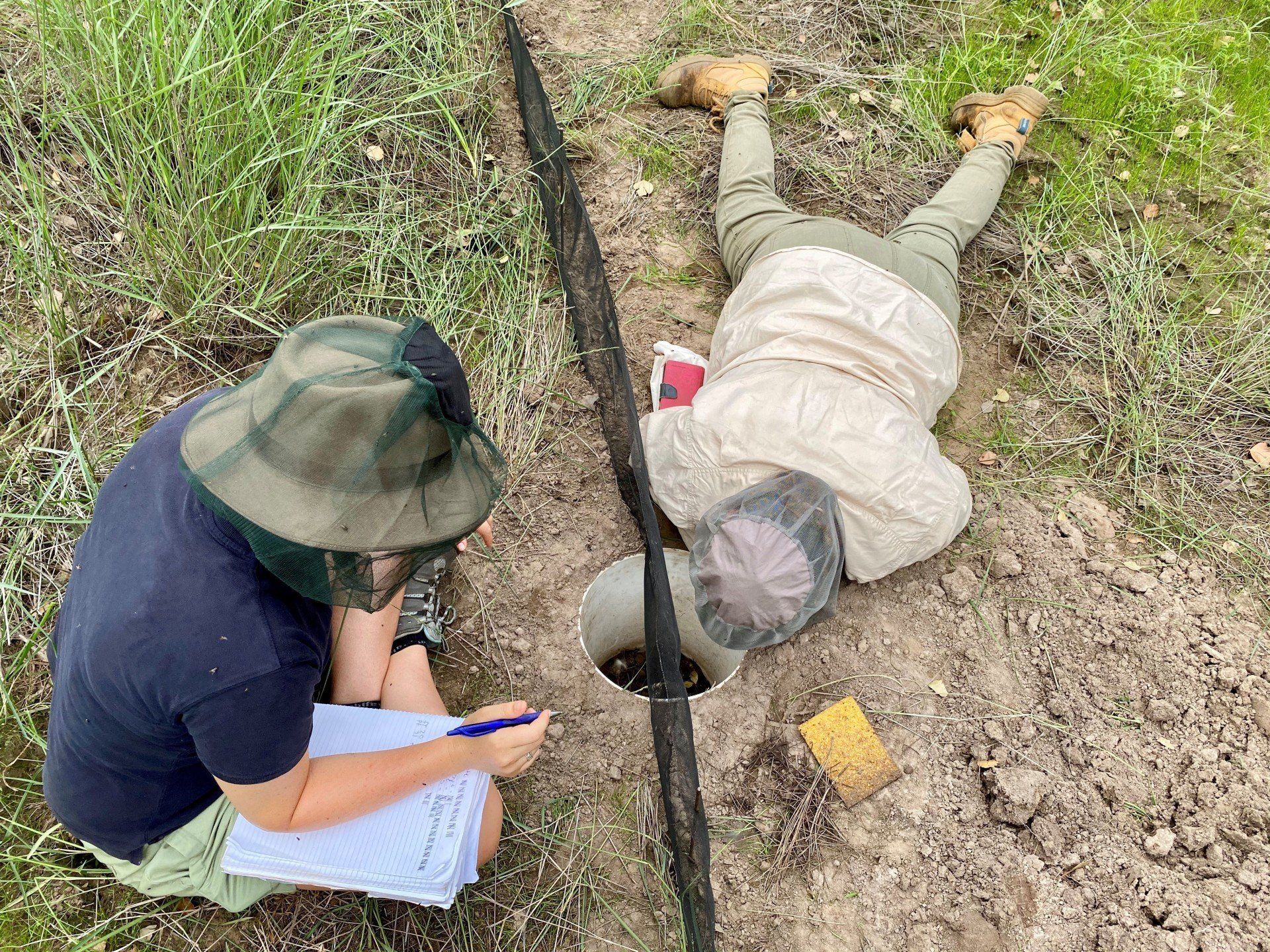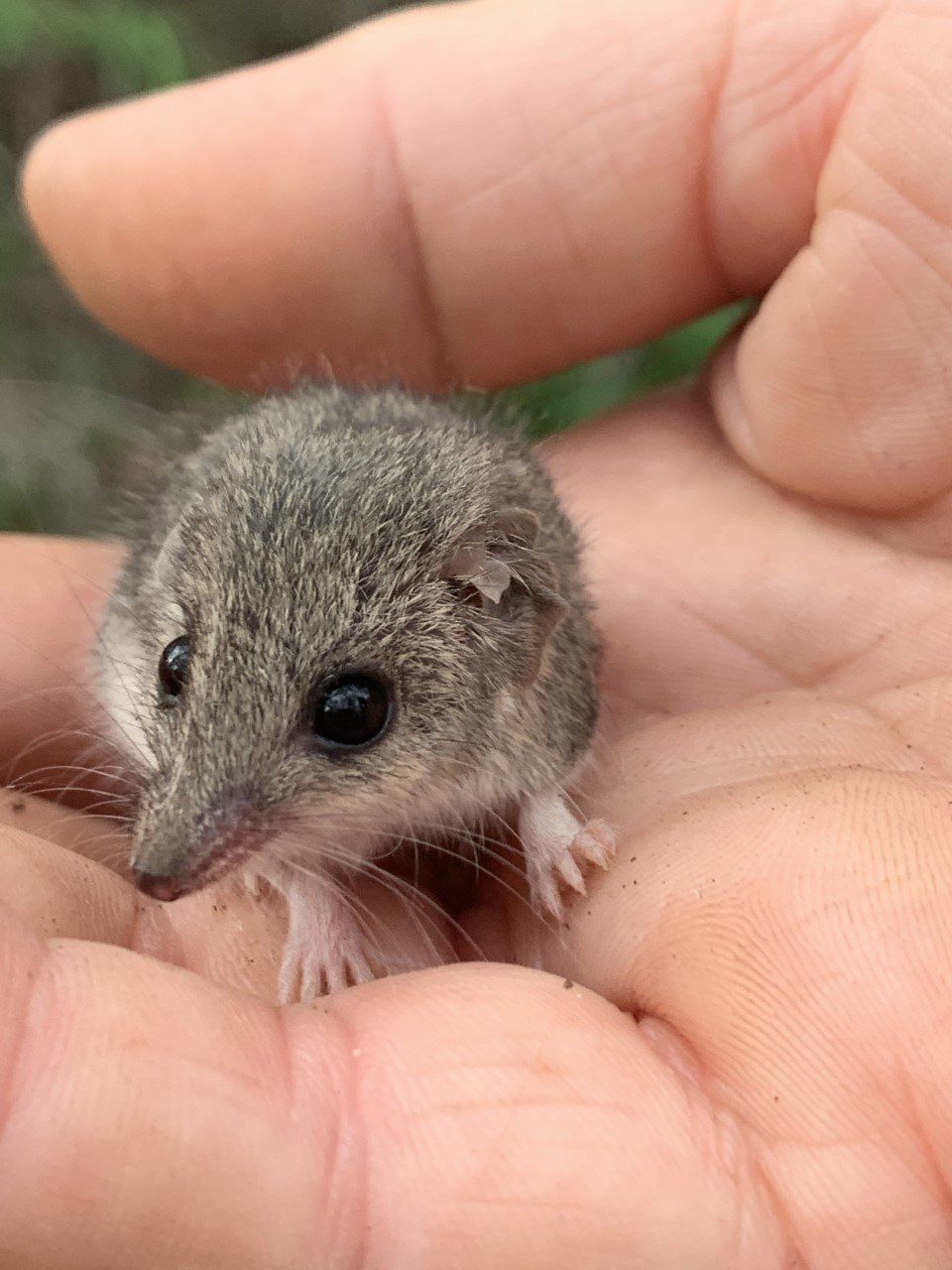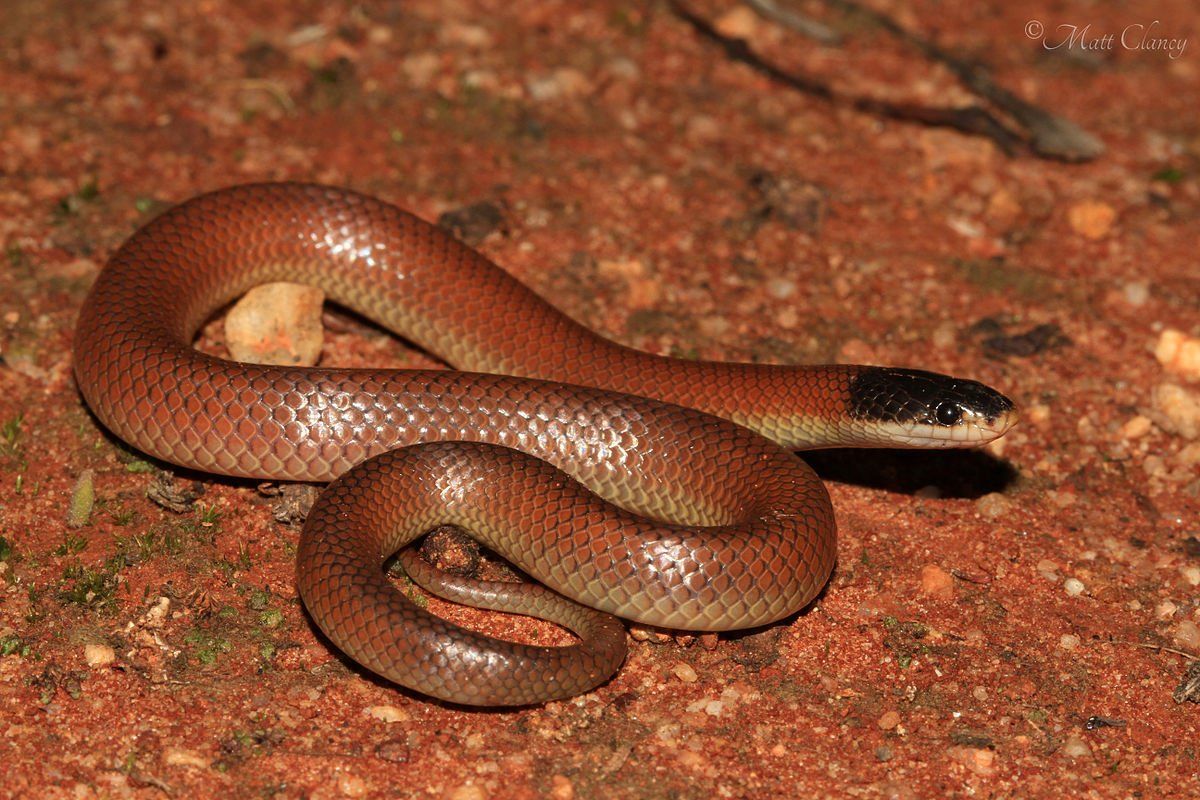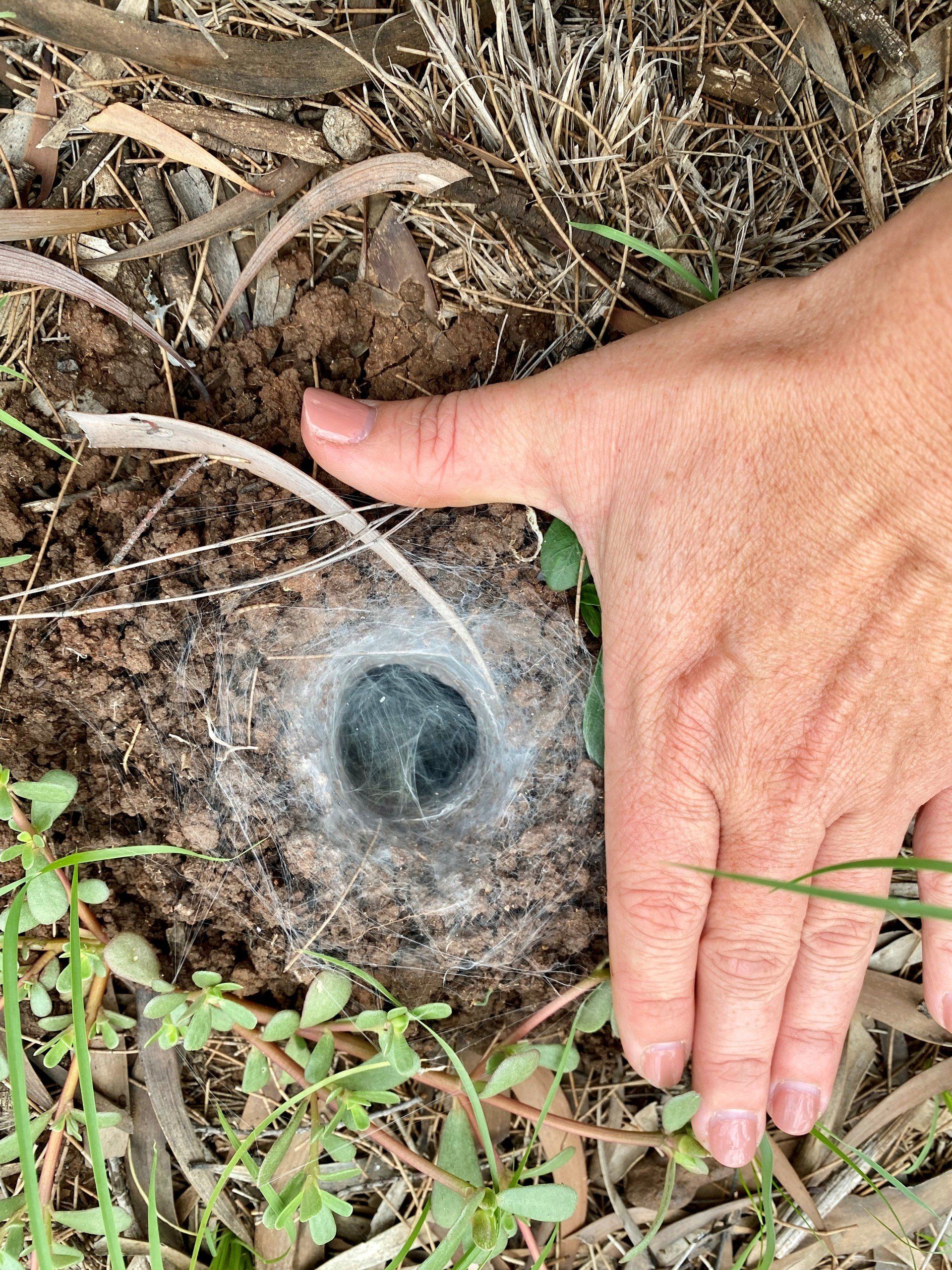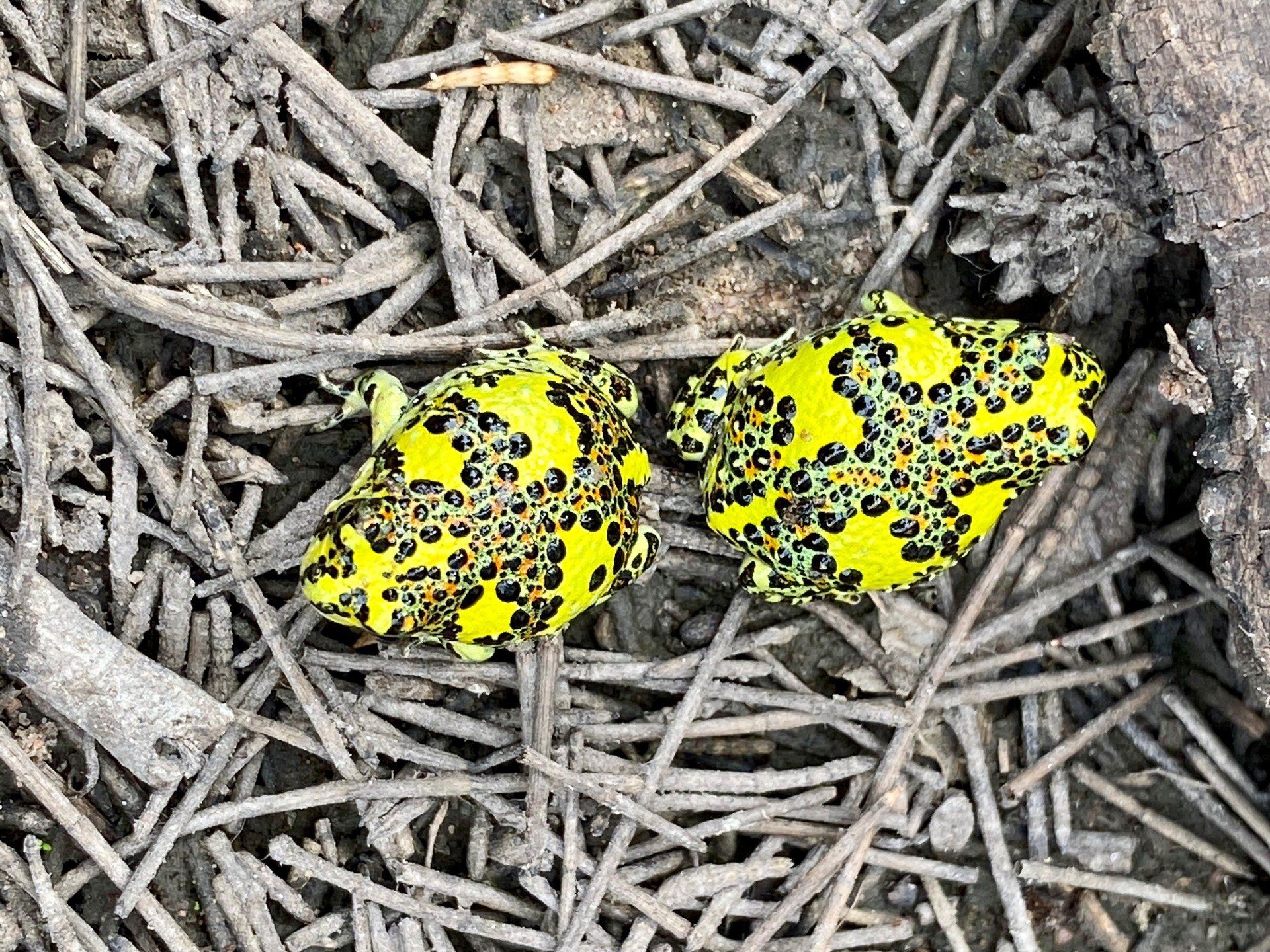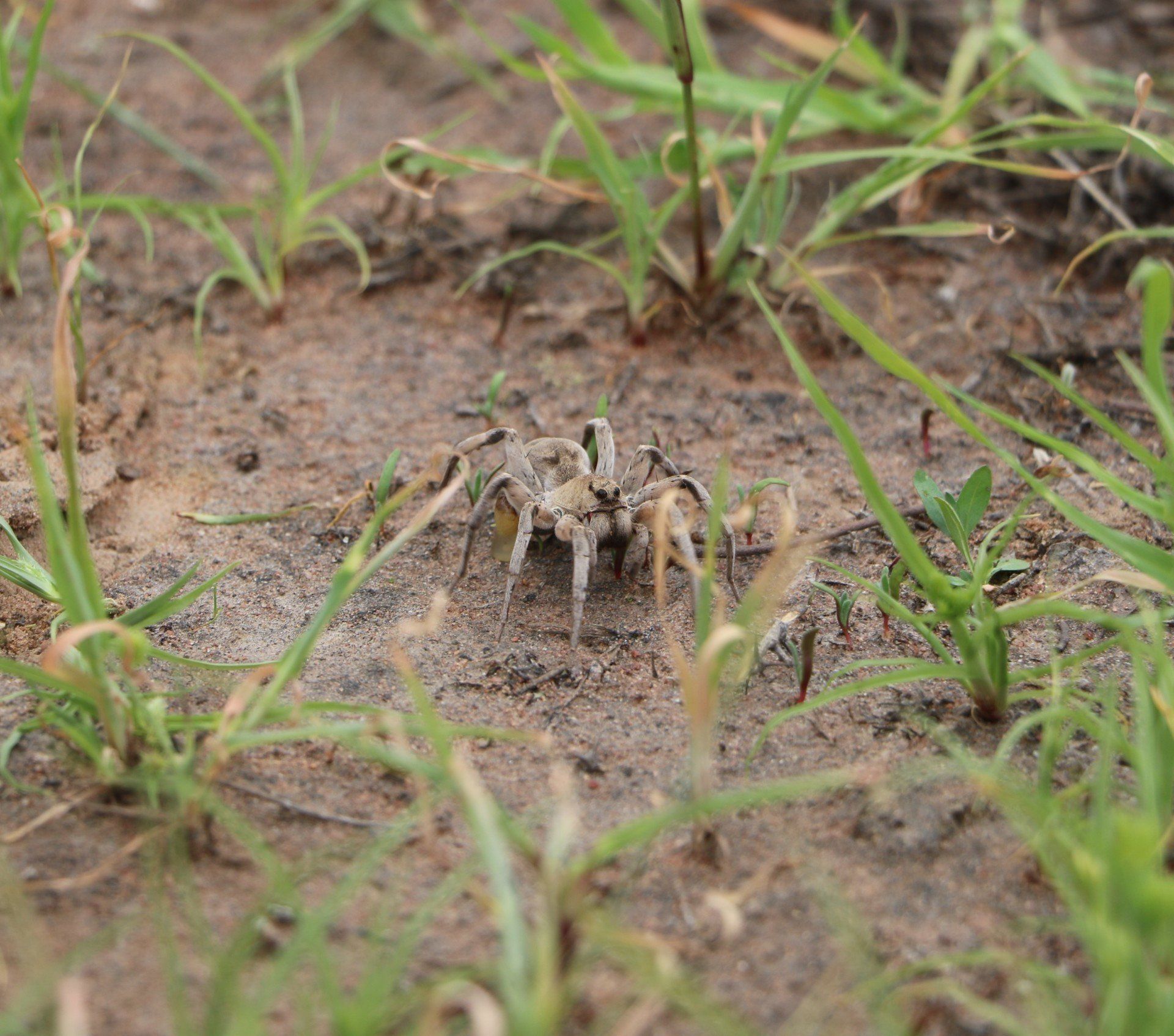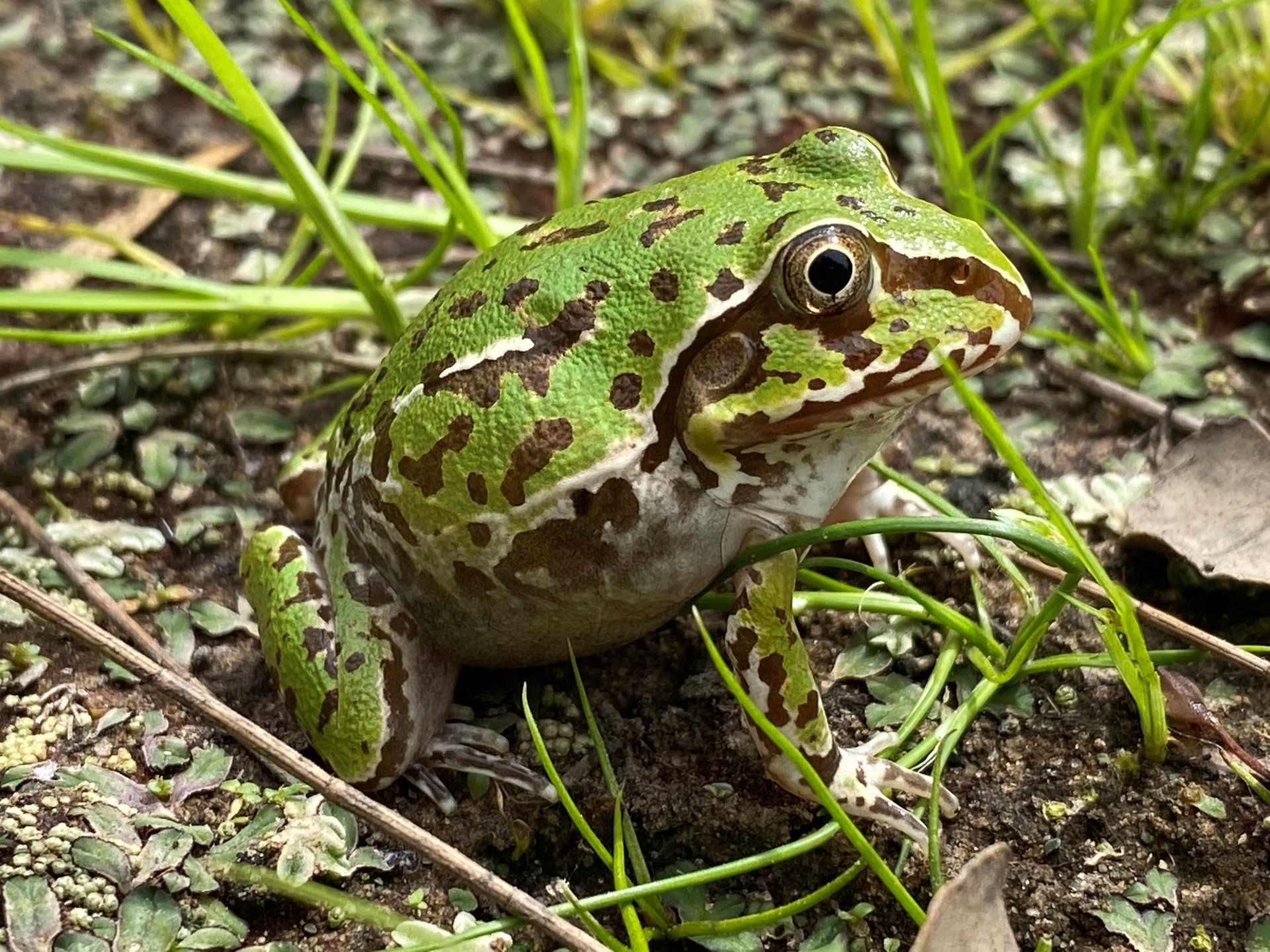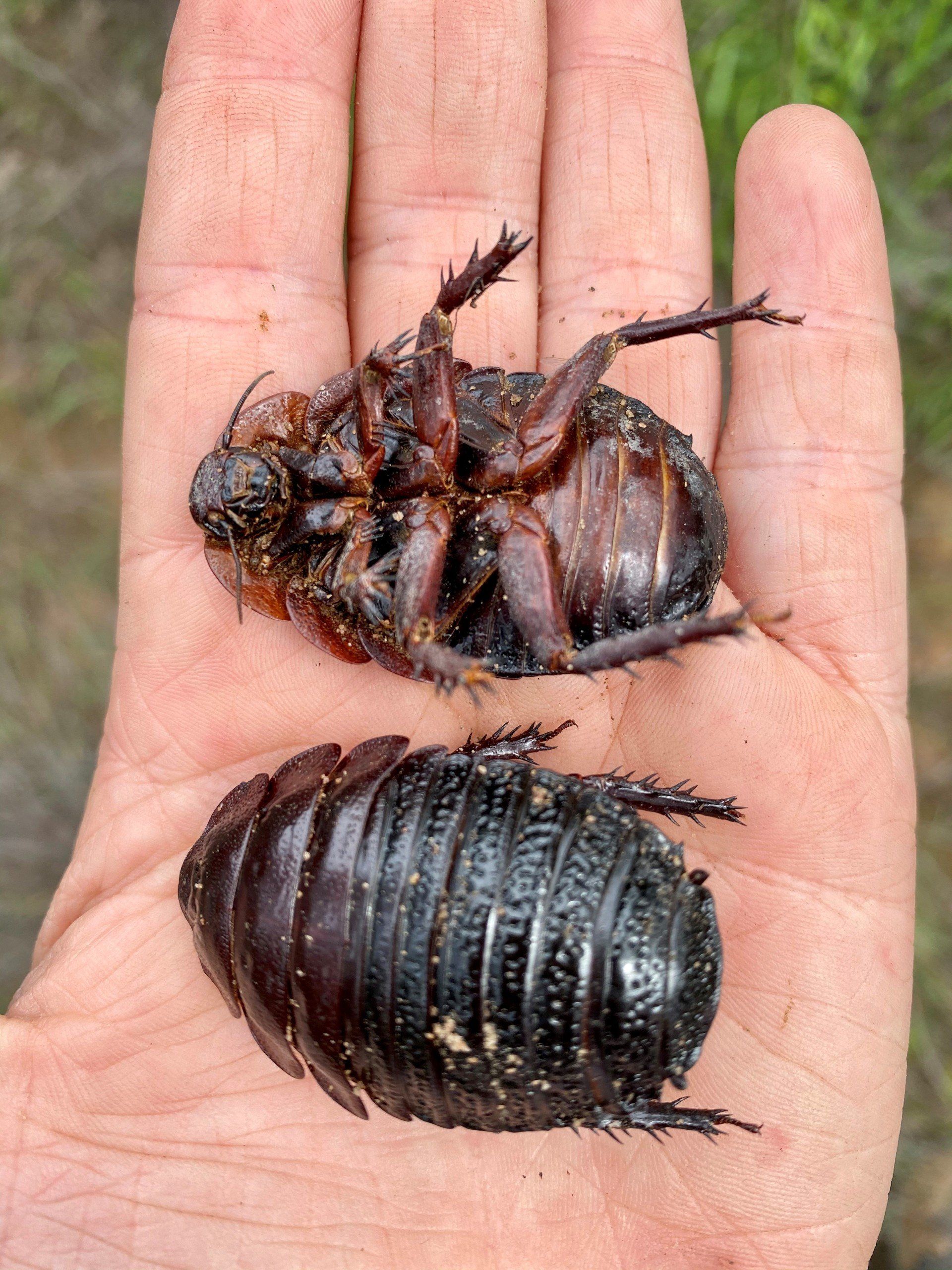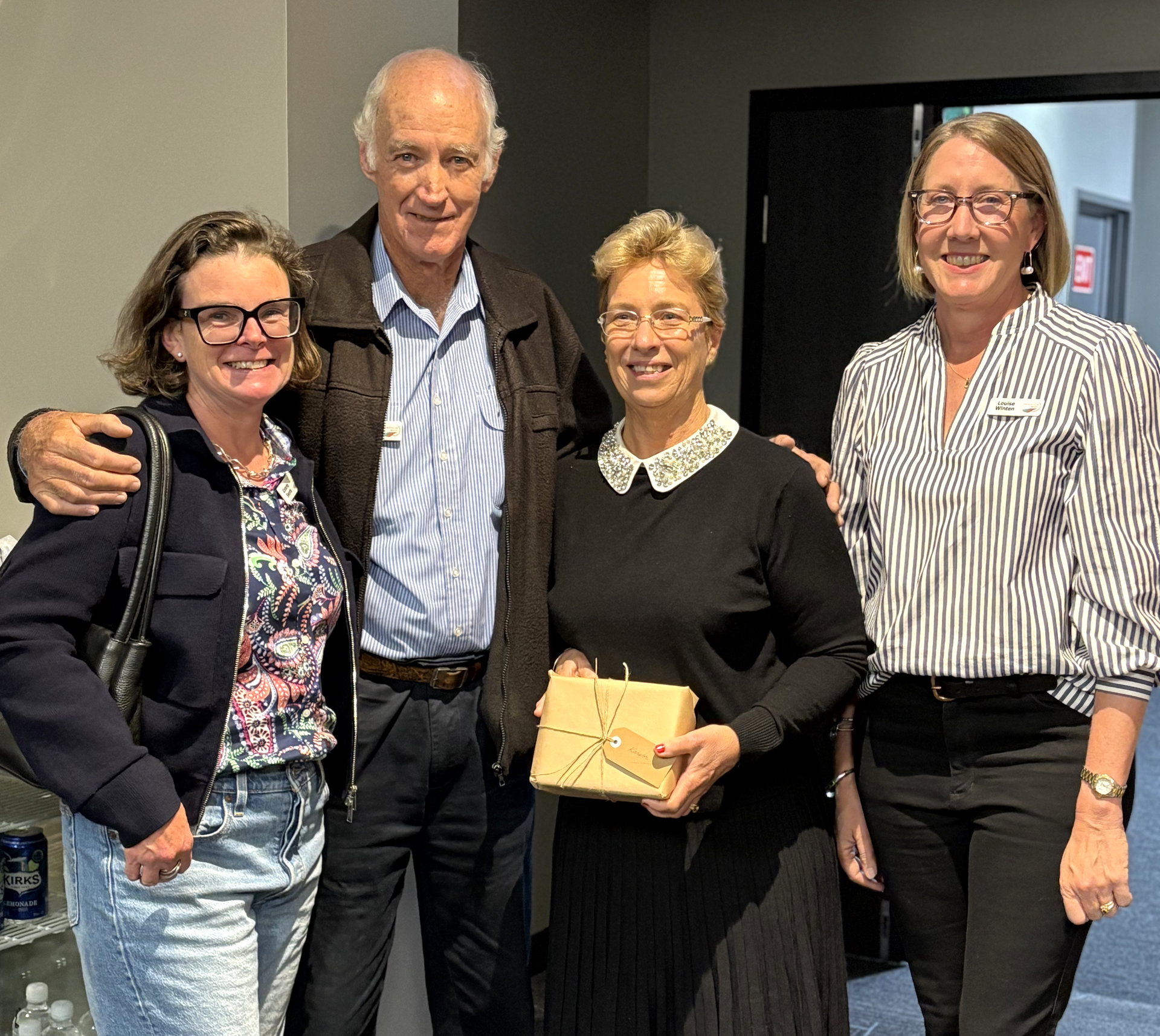Brigalow Fauna Survey: Moonie, QLD
We have been busy using science to explore Brigalow remnants in our region to gather baseline data about biodiversity, vegetation types and overall ecosystem health, specifically in the Moonie area.
Brigalow (Acacia harpophylla) is a species of silvery wattle that creates open forest and woodland communities known as the Brigalow Belt. Belah, Gidgee, Lancewood and Bendee trees grow alongside Brigalow as part of these forests and woodlands.
Excitingly, the eastern boundary of the Brigalow Belt is an ancient system. There are scattered patches of semi-evergreen vine thickets which are remnants of the extensive subtropical rainforests that occupied much of the brigalow lands millions of years ago. Due to land clearing for agriculture, only fragments of this system now remain.
The Brigalow and surrounding ecosystems provide habitat for many distinctive fauna species, all of which are key indicators of the overall health of the area.
Our team lead by Sandy Robertson and Holly Hosie spent the first week of March camped near Moonie where they identified four key sites across private and public land to undertake a fauna survey. They built trapping mechanisms at each site and recorded their findings over five days to create a snapshot of what lives in the area – read on to see what they found at each site.
The trapping set up
Sandy and Holly set six funnel traps, three pitfall traps along a drift fence and 20 elliot traps -10 on either side of the drift fence at each site.
Two infra-red remote camera traps were also set up at each of the four sites with one to capture feral animals in identified impact zones and one set up at the fauna trap site to measure the movement of species along the drift net.
SITE 1: Open Woodland / Grassland
Characterised by knee high grasses and shrubs, fallen timber piles and a widely-spaced eucalypt trees, the open woodland site produced some of the most thrilling finds of the survey.
A couple of exciting reptile finds were made in the grass including a healthy eastern brown in one of the funnel traps and a Bynoes gecko. Sandy identified the snake within the safety of the trap and carefully released it away from the trap site.
Amphibian species were also trapped, including green striped frogs, rough frogs and wrinkled toadlets. It was the perfect time to survey for frogs following the much-needed summer rainfall.
An eastern barn owl was spotted near the site at night, eastern grey kangaroos passed through the grasslands morning and evening, and a lucky bearded dragon was moved from the road near the site by Sandy. The dragon was in the middle of shedding its skin, something adult dragons do once or twice a year lasting 2-3 weeks.
The infra-red camera at this site captured a number of photos of a mob of feral pigs travelling along an established track late at night and early in the mornings - not a great sign but not unexpected.
SITE 2: Wetland / Woodland
The wetland site provided the highest count of fauna out of all the trap sites. The recent rainfall in the region meant there was plenty moving around – both native and introduced. The site was marsh-like with plenty of mud, grasses, wildflowers and low shrubs.
Frogs were abundant at the wetland site with 167 individuals counted in just one day. Unfortunately, there were plenty of signs of feral pigs also in the area including wallows, hoof prints and uprooted vegetation.
Feral pigs don’t have sweat glands and therefore require water to cool themselves. Additionally, feral pigs eat many native frog species so although it was promising to see so many frog species represented, it was also worrying to see strong evidence of this destructive species once again.
Observed frog species included ornate burrowing frogs, green striped frogs, wide-mouthed frogs and wrinkled toadlets.
Ornate burrowing frogs were the most common species discovered throughout the survey. These frogs are remarkable survivors that – as their name suggests - burrow during dry or cold times, emerging when it becomes warmer and rains. They occur in a wide range of habitats from the coast to central arid environments.
Their feet have special hardened plates known as tubercles that they use like a shovel to help them dig their burrows. They burrow backwards at an angle giving them the name 'backwards-sliding burrower'. (Source: Backyard Buddies.)
A number of other species were also spotted in proximity to the trap site including a lace monitor, brolga, red-tailed black cockatoos and feral species such as mice and a piglet.
SITE 3: Brigalow woodland
The trap sites in the Brigalow woodland revealed a number of reptile species such as Ingram’s skink, Dwyers snake, Bynoes gecko and tree skinks alongside a couple of amphibians – wide-mouthed frogs and ornate burrowing frogs.
Excitingly, a couple of mammals were also observed at this site – a slender-tailed (common) dunnart and an echidna. Australia has the worst mammalian extinction rate in the world so finding mammals in the ecosystems we’re working to protect is always celebrated.
Common dunnarts are endemic to Australia and are nocturnal insectivores whose diet consists mainly of beetles, spiders and cockroaches. Unfortunately, these small marsupials are a similar size and therefore often mistaken for house mice, a pest found in farm houses and sheds all over rural Australia. A trained eye can easily spot the difference though.
Dunnarts have sharply pointed snouts, large, bulging black eyes to help them with their nocturnal hunts and delicate white hind feet with no nail on the inner 'big' toe on the hind foot. They also have white bellies and cat-like teeth, excellent tools for feeding on insects where mice have rat-like teeth for eating seeds and grain.
Caper white butterflies and their chrysalis were found on the native orange bushes, and plenty of birds were observed including Rufous whistlers, an olive-backed oriole and yellow thornbills.
SITE 4: Brigalow woodland and associated wetland
The team were relieved to discover that the second brigalow site had the easiest soil for digging traps into. A Dubious dtella was trapped at this site, a four-clawed gecko native to north-eastern Australia. Tree skinks were also observed to be quite common to the area.
Amphibian species trapped mirrored those caught at the other sites - wide-mouthed frogs, short-footed frogs, green striped frogs and rough frogs. A few other species were also observed near the site such as an emerald spotted tree frog, broad-palmed frog and a number of fluorescent juvenile crucifix frogs.
Crucifix frogs also burrow into soil waiting to emerge after summer and autumn rains. They are one of the few species of Australian frogs which has skin patterning that does not provide camouflage, but instead acts as a vivid warning against predation. It is not clear whether the pattern is intended to warn against a poison, or a bad taste that the animal may possess, however the species and its relatives do also have glands that secrete a glue-like substance which may act as a deterrent against predators such as snakes and birds. One member of the same genus is known colloquially as the 'Superglue Frog' for this reason. (Source: Australian Museum)
Unfortunately, wild dog paw prints were found in the mud around the puddle where the crucifix frogs were found indicating that pigs weren’t the only feral species moving around the brigalow country.
A swamp wallaby made its way through the scrub while the team were working there and like the other sites, insects were abundant. The butterfly explosion was quite the sight with blue tiger and caper white butterflies dancing around the woodland. A large number of native cockroaches were also found at this site.
The team observed a wedge-tailed eagle in the area, pale headed rosellas and a burrowing spider, yet to be identified - added bonuses to the species trapped.
The data we’ve collected from our fauna survey at Moonie is essential as we work towards better understanding the state of Brigalow remnants and the fauna that relies on its existence and health. For information about our Brigalow project, visit our project page.
ENVIRONMENT PROJECT

At Southern Queensland Landscapes, you will be part of a team that works with landholders, community groups, industry and government to deliver real, science-based solutions to support farming, biodiversity, and the health of our landscapes. Working with us means more than just a job; it’s a chance to make a positive difference. You’ll be contributing to practical projects that care for our environment, strengthen regional communities and leave a legacy for future generations. If you’re passionate about healthy landscapes, thriving regional communities and meaningful work, you will find your place with us. We are looking for an organised and proactive Administration Officer to join our friendly and committed team. In this diverse role, you’ll provide essential financial, human resourcing and administrative support across the organisation, ensuring smooth day-to-day operations and exceptional service to internal and external stakeholders. What You Will Do You’ll be the go-to person who keeps everything running seamlessly, whether it’s greeting visitors, managing correspondence, or coordinating meetings, travel and events. You’ll provide high-level executive support to the CEO and Executive Leadership Team, assist with finance and HR processes, and help maintain the systems, facilities and resources that underpin our work. Every day will bring variety from supporting community projects and team activities to finding smarter ways to improve communication and workflow. You’ll play a vital role in helping us deliver meaningful impact across southern Queensland. About You You’re a natural organiser with strong attention to detail and a positive, professional manner. You enjoy working with people and take pride in delivering high-quality support. You bring: A Certificate II (or higher) in Business or Administration, or equivalent experience Demonstrated experience across a broad range of administrative functions including reception and executive support, IT support, facilities and equipment maintenance, and office operations Excellent communication and interpersonal skills, with the ability to engage confidently with colleagues, partners and community members Strong organisational and time management skills, balancing competing priorities with care and accuracy Initiative, adaptability and a proactive approach to problem-solving A genuine commitment to teamwork, learning and continuous improvement Why Join Us? At Southern Queensland Landscapes, you will work in a supportive, collaborative environment where your contributions truly matter. You’ll enjoy variety in your work, opportunities to learn and grow, and the satisfaction of being part of a team that’s making a tangible difference for our environment and regional communities. If you’re looking for a role that combines purpose, teamwork and professional growth — apply now and help us create a thriving, sustainable future for southern Queensland.
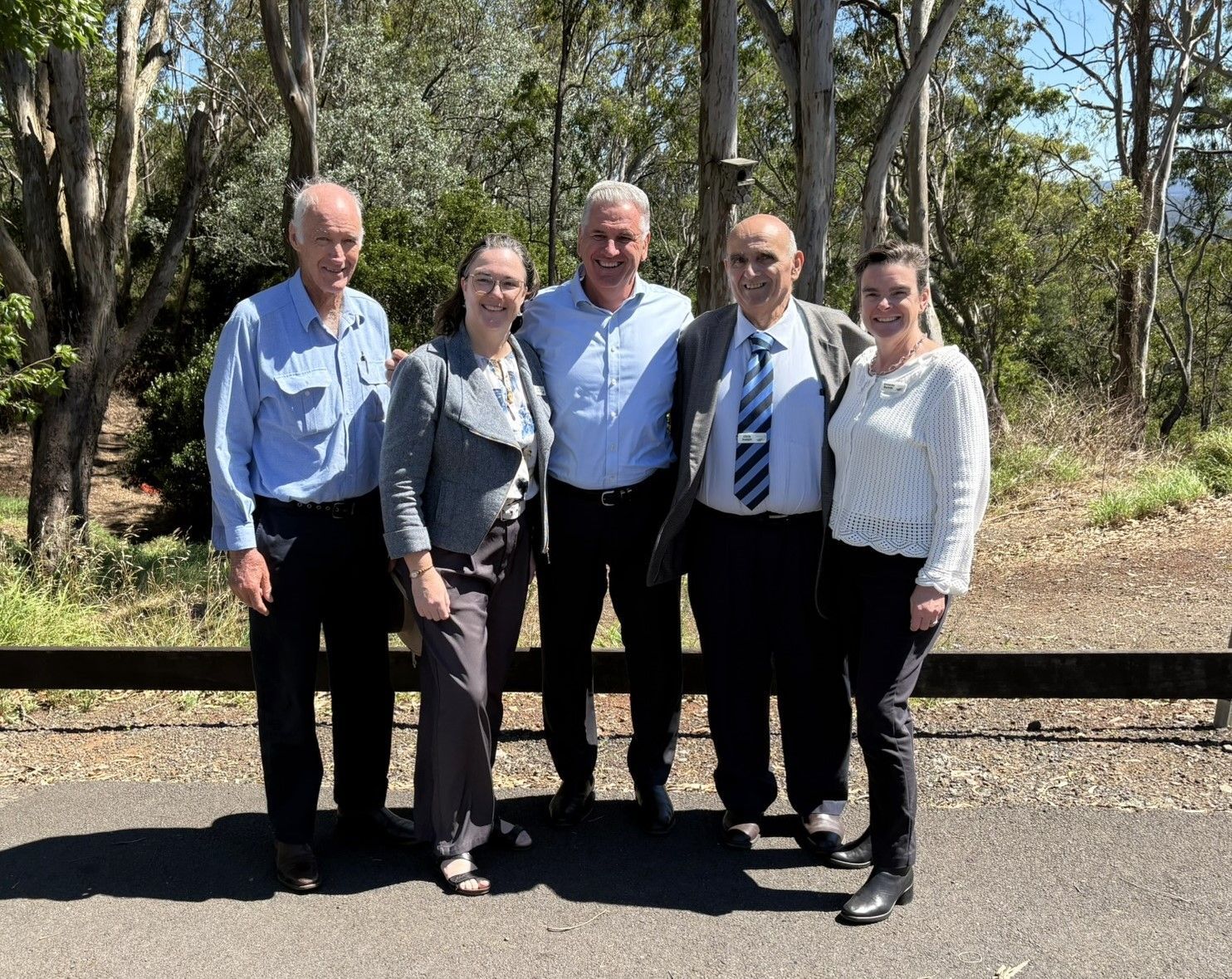
Southern Queensland is set to benefit from a major investment in Queensland’s natural assets, with more than $9 million allocated through the Queensland Government’s Natural Resource Management Expansion Program and delivered by Southern Queensland Landscapes. Southern Queensland Landscapes will receive $6.6 million to work with landholders to improve more than 124,000 hectares of land and vegetation adjacent to key waterways by installing fencing and watering points to better manage grazing. A further $2.5 million is allocated to the improvement of priority koala habitats and support animal movement and survival across Southern Queensland. This targeted action to remove key threats including wild dogs and invasive cactus species. Southern Queensland Landscapes CEO, Gillian Meppem said “the investment highlights the vital link between healthy landscapes, productive agriculture, resilient koala populations and thriving waterways.” “We are looking forward to delivering two key projects in partnership with landholders, through the Natural Resource Management Expansion Program. These projects are focused on protecting our waterways through improved grazing management and supporting thriving koala populations across Southern Queensland.” “Better grazing management, strategic fencing, and improved stock water infrastructure will enhance ground cover and protect waterways, ensuring our landscapes are more capable of resisting and recovering from natural disasters and the impacts of a changing climate.” “We are improving koala habitat by tackling key threats such as wild dogs and invasive cactus and supporting greater genetic diversity to ensure thriving koala populations across southern Queensland,” she said. Minister for Natural Resources and Mines, Manufacturing and Regional and Rural Development, The Honourable Dale Last, said “the funding demonstrates the Queensland Government’s strong commitment to supporting regional communities and natural resource management.” “When we came into government, we promised we would double funding for NRM organisations, and we would ensure our regional workforce would benefit, and we are delivering on that promise. “These NRM organisations are leading the way in safeguarding our natural resources, and that’s why we’re proud to support them and invest in Queensland’s future.” The NRMEP is a partnership between the Queensland Government and NRM Regions Queensland to deliver $117.84 million in on-ground land, water and biodiversity programs over the next three years.
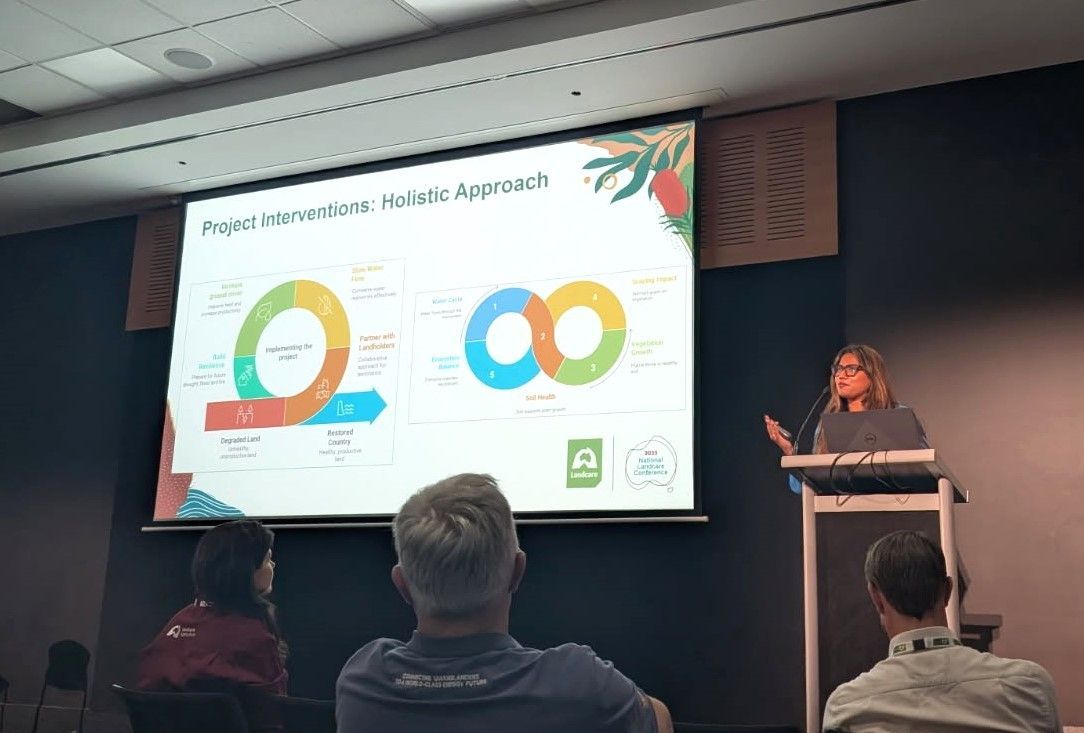
We are seeing fantastic momentum across the region, with strong interest from landholders in improving land condition. Even better, clusters of neighbouring properties are getting involved, a promising sign for achieving landscape-scale change that supports water infiltration, soil health, and resilient groundcover. To help visualise this, Projects Lead Payel Sinha, developed a set of clever graphics that capture the essence of the NRRP program. The circular diagram below shows how water, soil, vegetation, grazing, and ecosystem balance are interconnected, all working together to support healthier landscapes.
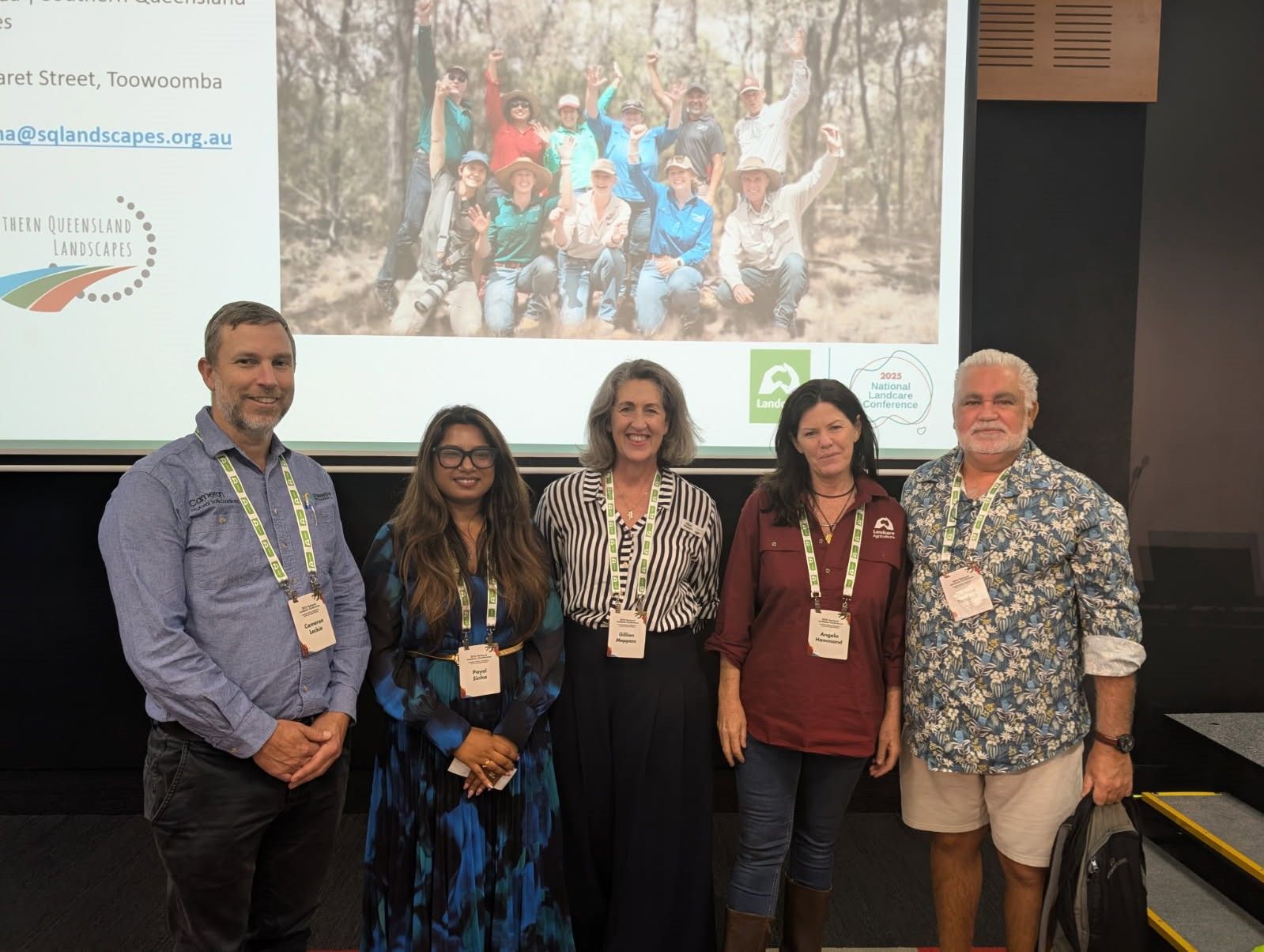
We were honoured to have CEO Gillian Meppem, Richard Turnbull, Dr Payel Sinha and Uncle Kevin, a Margany Elder from near Quilpie, come together on the Gold Coast for this year’s Landcare Conference, representing our vision, work and cultural partnerships across the region. Dr Payel Sinha delivered a presentation on the Natural Resource Recovery Program: A Holistic Approach to Restoring Landscapes , showcasing how integrative, place-based strategies can unite ecological health, cultural values and community resilience.
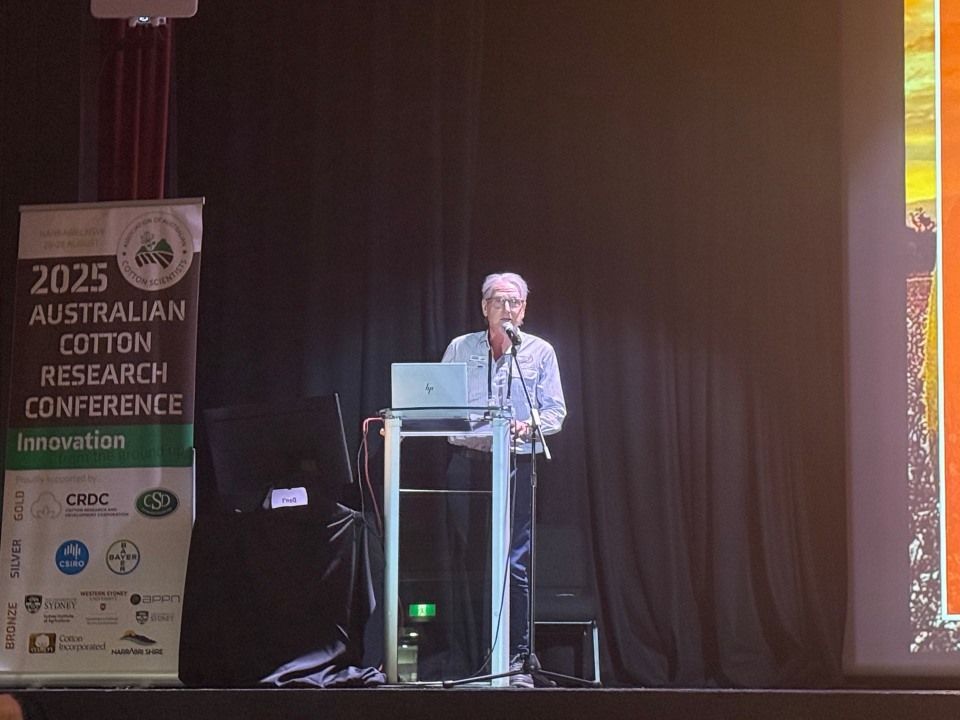
The rapidly evolving global market for agricultural commodities, including cotton, was front and centre at the recent Australian Cotton Research Conference held in Narrabri, NSW. A key theme throughout the event was the increasing pressure climate change places on cotton production and how the industry is adapting through innovation and research. Andrew Davidson of Southern Queensland Landscapes introduced an innovative national project funded by the Cotton Research and Development Corporation (CRDC). The project focuses on mapping woody vegetation across cotton farms in Australia, a crucial step toward better understanding on-farm biodiversity and supporting sustainability goals. The project uses a cutting-edge methodology developed by Southern Queensland Landscapes, drawing on a national dataset curated by the Terrestrial Ecosystem Research Network (TERN). What makes this approach unique is its ability to consistently measure vegetation across state and territory lines, overcoming long-standing challenges caused by fragmented and inconsistent regional datasets. The initiative is a true collaboration between the cotton industry, Natural Resource Management (NRM) groups, and NRM Regions Australia. Together, they aim to build a national picture of woody vegetation cover, including how much of it connects to larger, regional biodiversity corridors. Why It Matters... This vegetation data will provide a scientifically robust and cost-effective indicator of potential biodiversity on cotton farms. In practical terms, it can help: • Support cotton growers in meeting environmental standards for market access • Inform risk management strategies and conversations with financiers • Align with international frameworks such as: - The Science-Based Targets for Nature - The Post-2020 Biodiversity Framework - The Taskforce on Nature-related Financial Disclosures (TNFD) As the cotton industry looks to remain competitive and resilient in a changing climate, initiatives like this are critical. They help position Australian cotton as a globally trusted, environmentally responsible product.

Project Officers Katrina Higgins and Erin Landsberg recently joined Rose and Weston from Boobook Ecological Consulting in Roma, to complete field monitoring in the Murweh and Maranoa districts. This monitoring measures the value and health of Coolibah, Poplar Box, and Brigalow habitat. During this time, we deployed acoustic recorders and motion-sensor wildlife cameras, and took DNA samples from nearby water sources to ascertain the fauna within these threatened habitats.
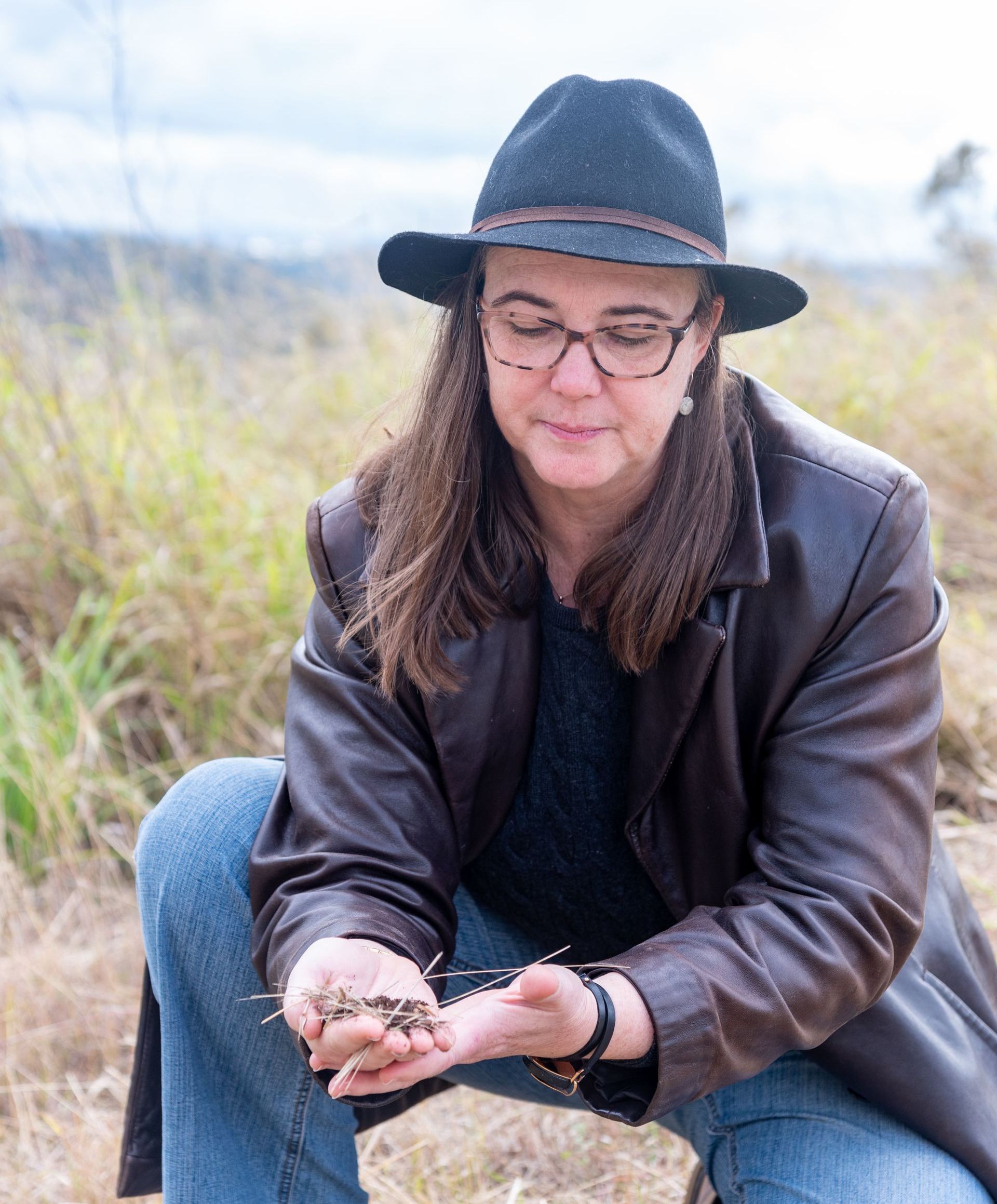
Playing a Leading Role in the National Soil Monitoring Program Queensland’s regional Natural Resource Management (NRM) organisations are playing a leading role in the National Soil Monitoring Program (NSMP), one of Australia’s most ambitious efforts to assess and improve soil health. Funded by the Australian Government through the Natural Heritage Trust and led by CSIRO, the NSMP will involve sampling at approximately 3,000 sites nationwide over three years, more than 850 of those in Queensland, with a focus on key agricultural zones. Queensland’s NRM groups have formed northern and southern clusters to deliver the program, contributing valuable expertise from over 25 years of on-ground experience. Southern Queensland Landscapes will lead delivery for the QLD South cluster of regions. The data collected will provide a nationally consistent picture of soil condition and health, enabling better decision-making for farmers, land managers, and policymakers to support sustainable, climate-smart agriculture. Jayne Thorpe, Business Development Manager at Southern Queensland Landscapes said, “In total, the QLD South cluster will collect 565 soil samples over the course of the project. That will work out as 11.3 tonnes of soil sent for analysis!”
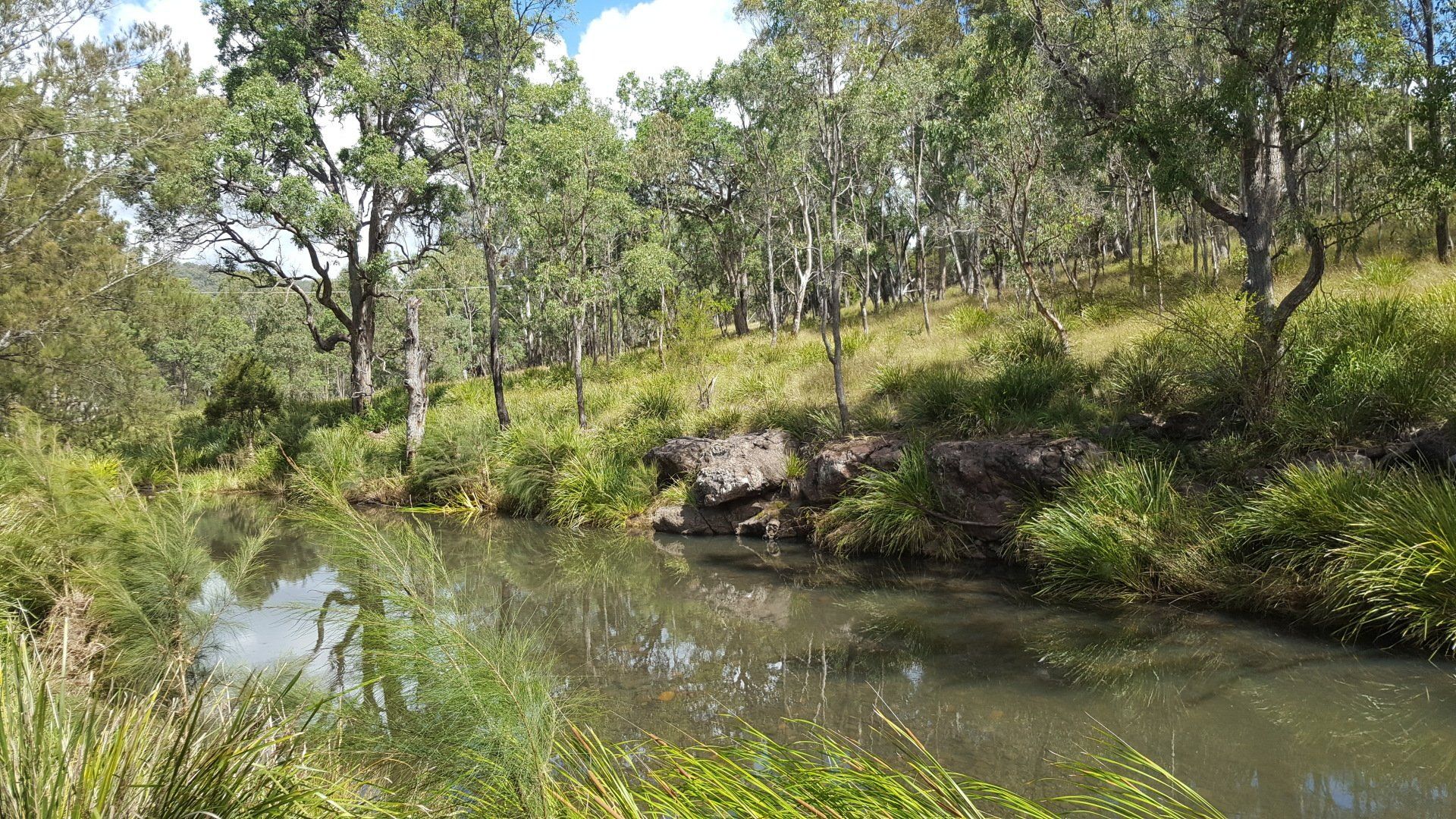
1. What is Natural Capital? Natural capital refers to the natural resources and ecosystems, like soils, native vegetation, water, and biodiversity, that underpin productive farming and provide essential services such as clean water, healthy soils and carbon storage. For Queensland landholders, this means your land’s value now includes the environmental benefits it delivers, not just crops or livestock. While the term Natural Capital has risen to prominence with government, industry and the public in recent years, the sustainable use of our natural capital, its maintenance and improvement have been fundamental to regional NRM organisations since inception. Identifying and assessing our natural assets are foundational to the development of our regional NRM strategies and plans which guide our operations and provide us with the knowledge and expertise to play a key role in Australia’s efforts to manage and enhance our Natural Capital. 2. Why Does Natural Capital Matter in Agriculture? Australian agriculture is experiencing a shift where nature and production are seen as interconnected assets. This approach is being driven by both market demand and new government policies, with natural capital now influencing land values, investments, and farm business resilience. 3. How Can Farmers Monetise Natural Capital? Natural capital markets allow landholders to earn income by improving or protecting their land’s natural assets. The most common ways to participate include: Carbon Credits: Under the Australian Carbon Credit Unit (ACCU) Scheme, farmers can generate credits by adopting practices like reforestation, soil carbon improvement, or avoided clearing. These credits are regulated by the Clean Energy Regulator (CER) and can be sold to the government or private buyers. Biodiversity Certificates: The new federal Nature Repair Market, established by the Nature Repair Act 2023, allows farmers to earn tradable biodiversity certificates for projects that restore or protect native ecosystems. The CER also administers this market, ensuring robust oversight and scientific credibility. Land Restoration Fund (LRF): Queensland’s LRF builds on the federal framework, offering extra incentives for projects that deliver both carbon abatement and environmental co-benefits, such as improved water quality or habitat restoration. The LRF works in tandem with the ACCU Scheme and prioritises projects that support regional sustainability. More Information: 🔗 www.environment.nsw.gov.au/topics/natural-capital/explained 🔗 www.cer.gov.au/schemes/australian-carbon-credit-unit-scheme 🔗 www.qld.gov.au/environment/climate/climate-change/land-restoration-fund 🔗 www.nrmrq.org.au/queensland-nature-fund-natural-capital 🔗 www.legislation.gov.au/C2023A00121/latest/text

The Board of Southern Queensland Landscapes is pleased to announce Kimberley Swords has been appointed as Chair of the Board of Directors. Kimberley began her working life as a large animal country vet, after student practical experience across Southern Queensland in Goondiwindi and Injune. Kimberley’s strong interest in natural resource management and regional communities has led her to contribute across a wide variety of industries including the public sector, where she rose to the role of Deputy Secretary in the Australian Government and led environmental approvals, heritage and marine. Her extensive leadership experience incorporates many board roles, including as a current serving member of the CS Energy board. “Following an extensive recruitment phase, where the Southern Queensland Landscapes Board were gratified to receive several high-quality applications, we are delighted to announce the subsequent overwhelming member endorsement of Kimberley as Board Chair. The appointment of a new Chair in any organisation represents an opportunity for refreshment and renewal and the Southern Queensland Landscapes Directors and staff are looking forward to working with Kimberley to deliver our Strategic Plan” said acting Southern Queensland Landscapes Chair, Louise Winten. Kimberly looks forward to engaging with stakeholders across Southern Queensland, with her first full board meeting set down for late June in Charleville. “It is an exciting and challenging time for the region, as we lean into the changing climate, different economic opportunities, and the next generation of regional leaders. I look forward to connecting and collaborating across our communities to better understand how Southern Queensland Landscapes can support sustainable environmental outcomes that materially improve the lives of people living and working in Southern Queensland,” she said. The position of Chair became vacant following the retirement of founding Chair, and long term supporter of regional natural resource management, The Honourable Bruce Scott, AM, at the end of February 2025. Bruce made a significant contribution to Southern Queensland Landscapes during his time as Chair and the Board thanks him for dedication, time, energy, and commitment to the organisation. Southern Queensland Landscapes is one of 11 Queensland-based Natural Resource Management (NRM) organisations. Spanning 314,398 square kilometres, the our footprint encompasses the Condamine catchment, Qld Murray Darling Basin and the south-west Mulga Lands. Southern Queensland Landscapes relies on evidence based information, supported by First Nations knowledge, to effectively balance productivity and environmental outcomes that support the regional communities within our landscapes.

